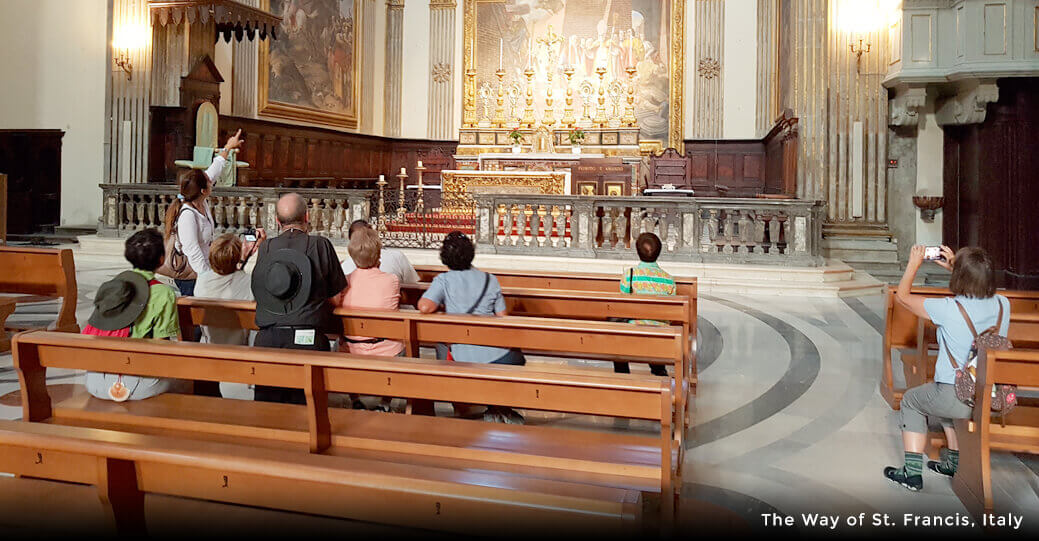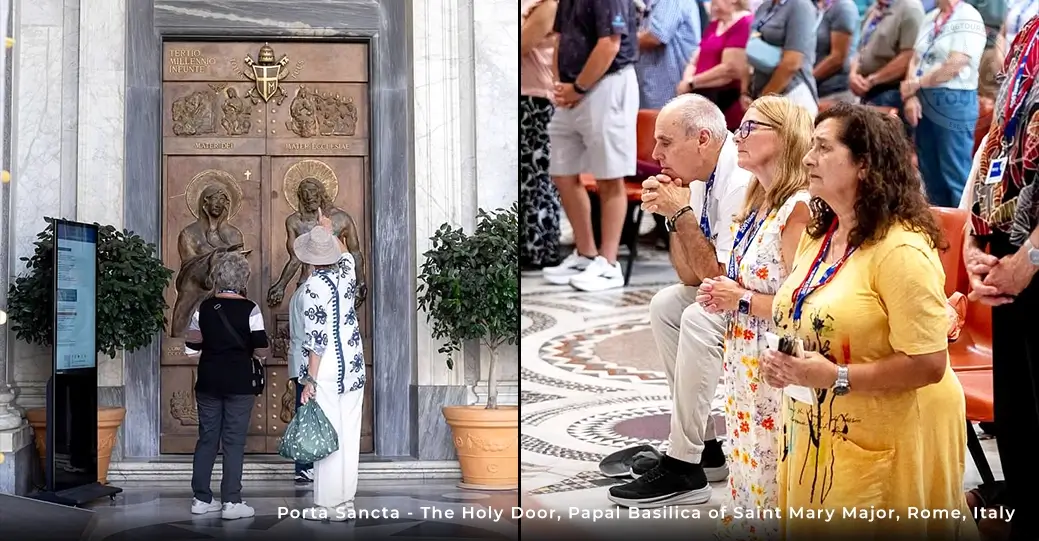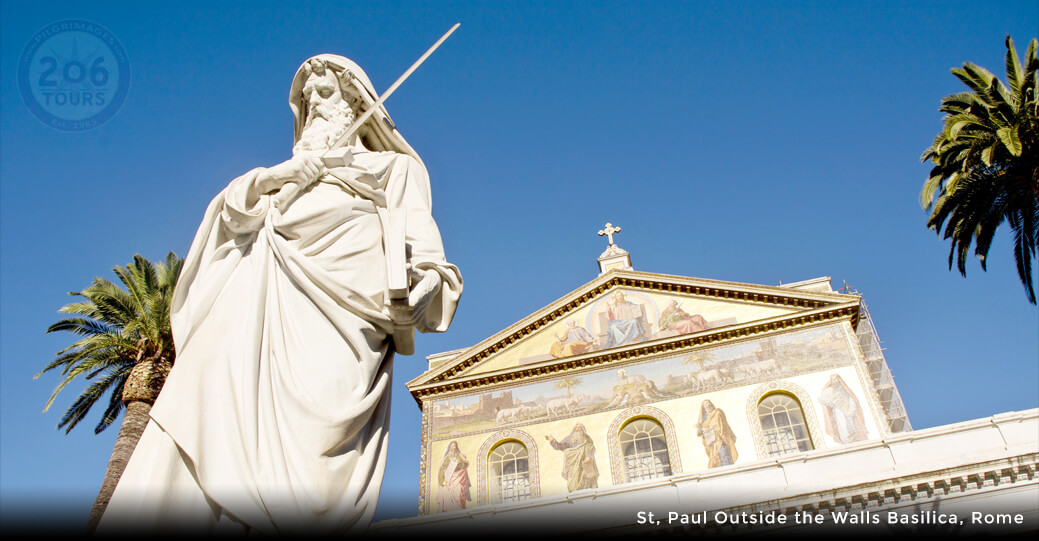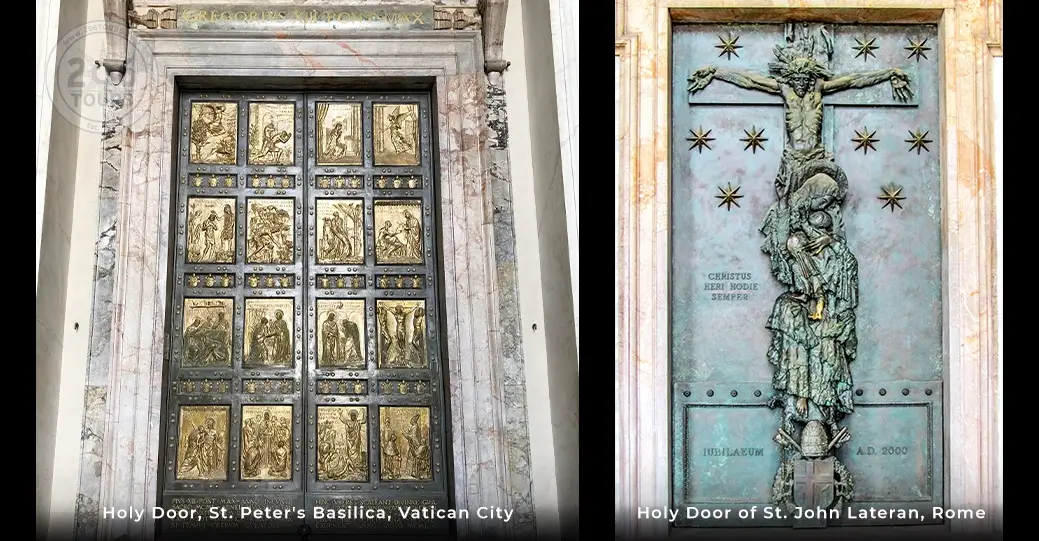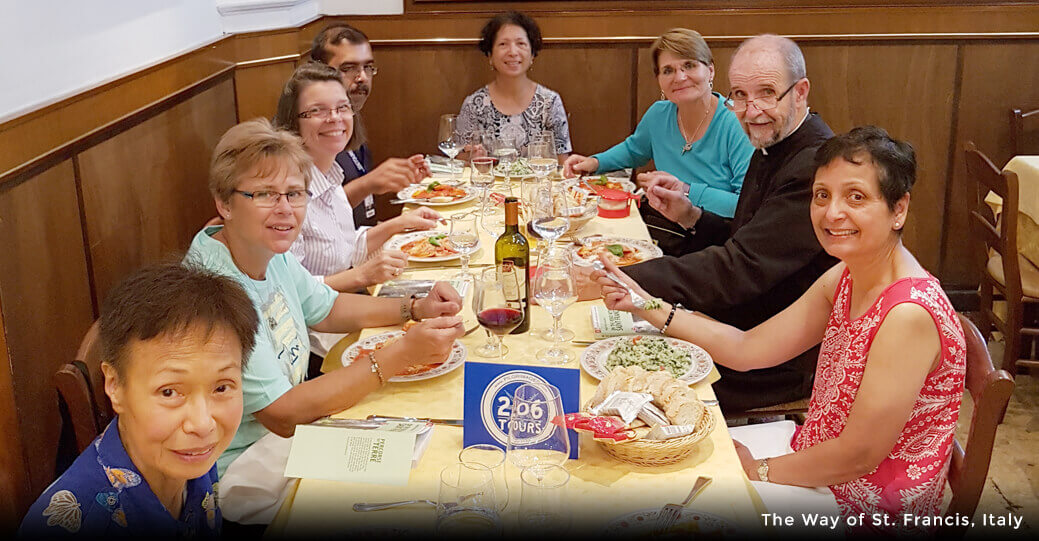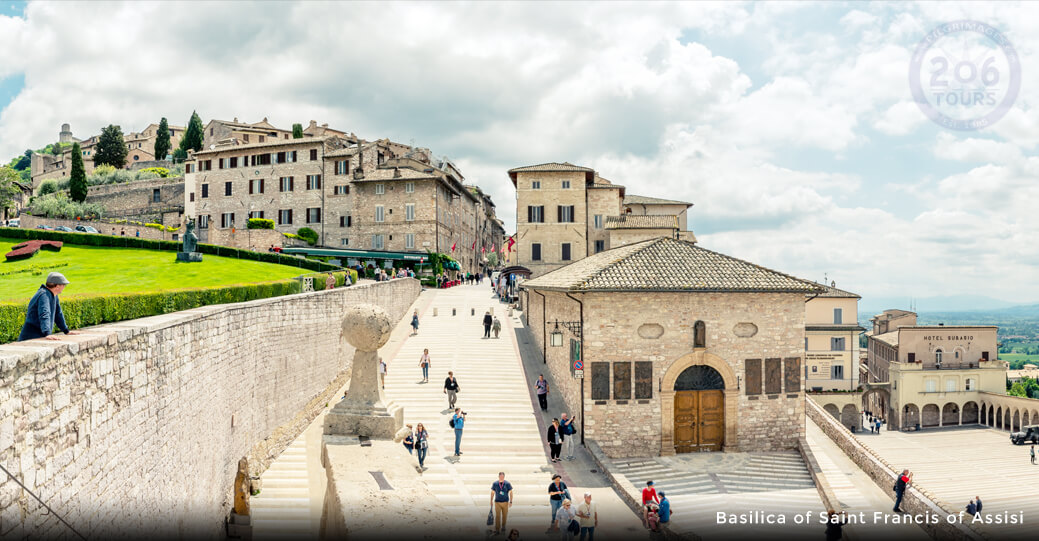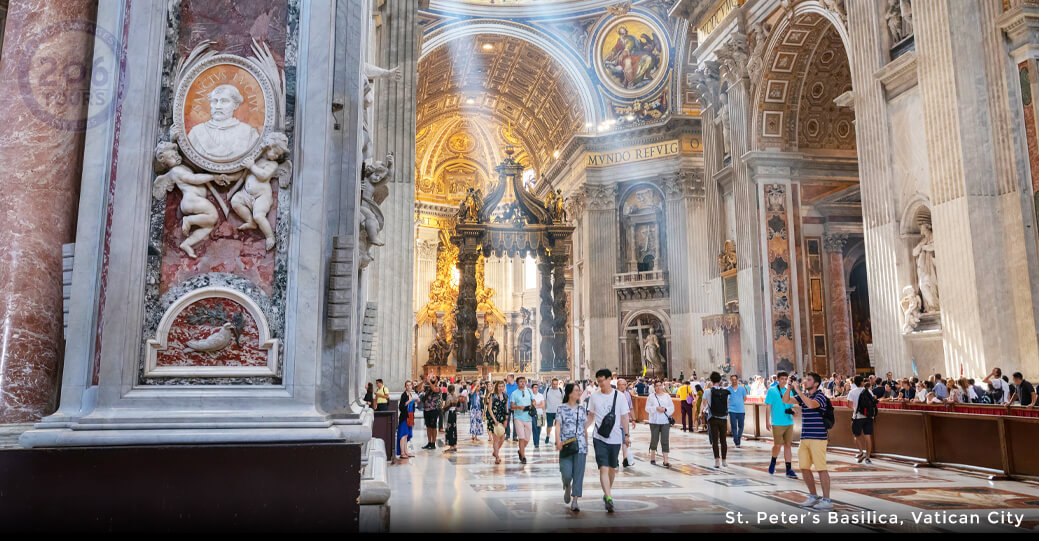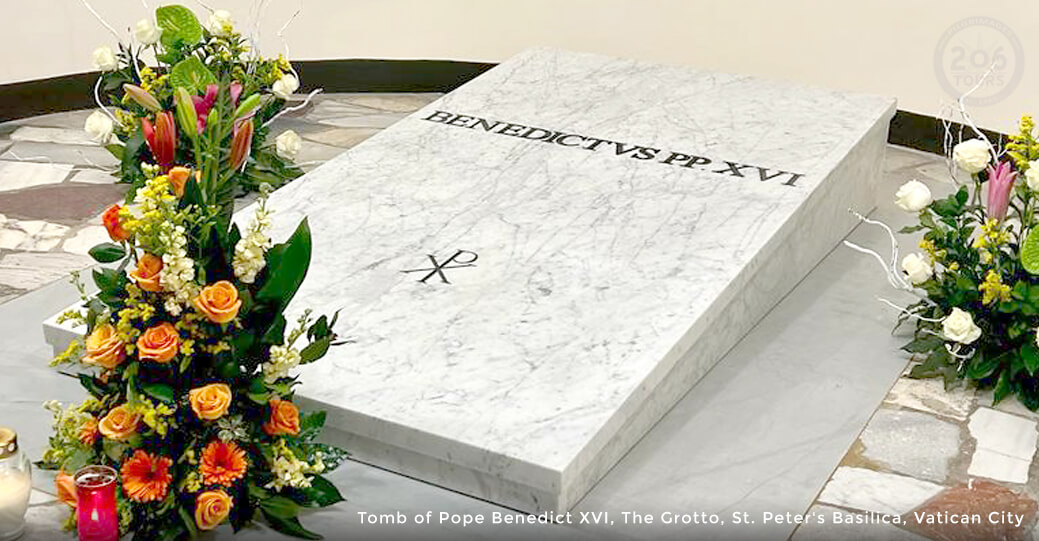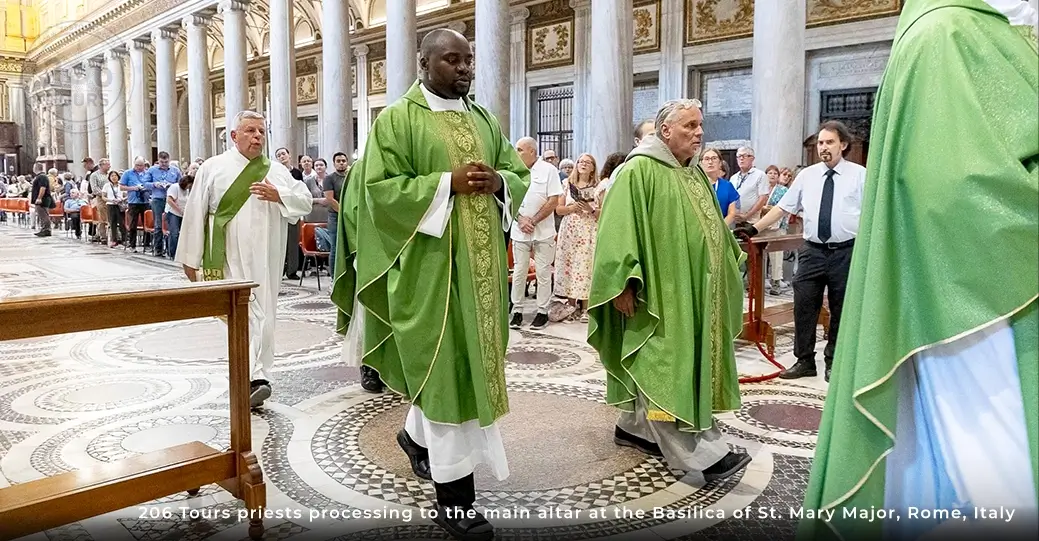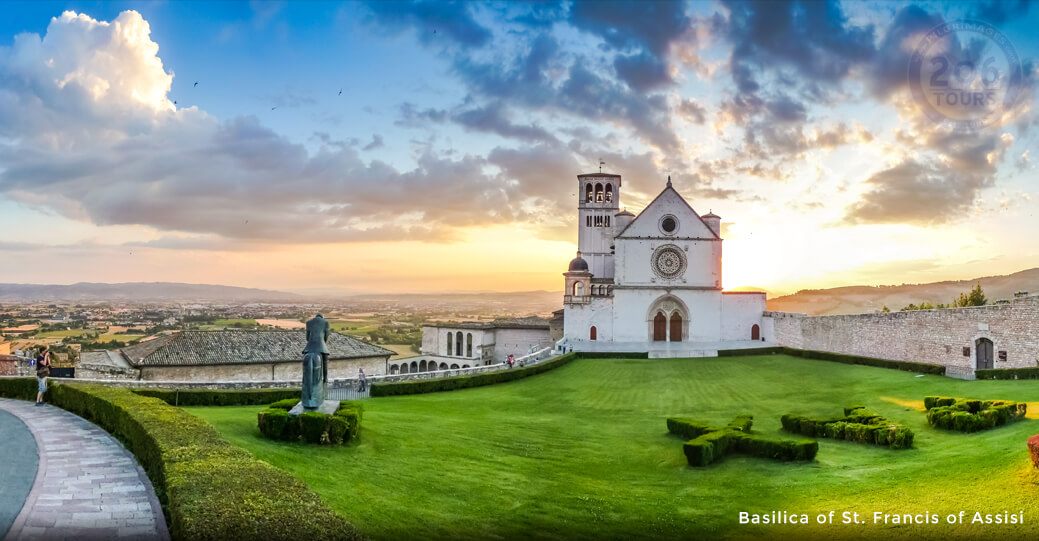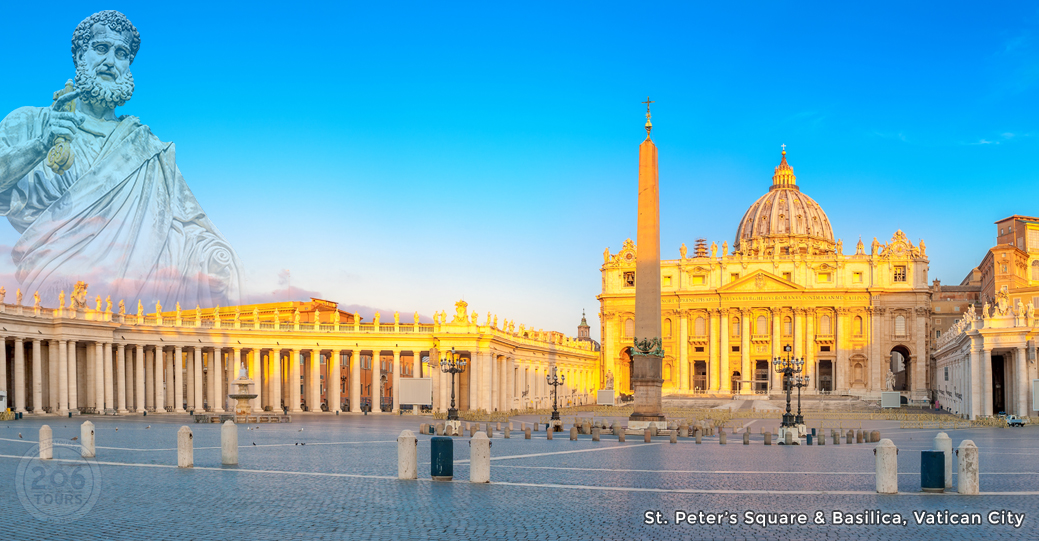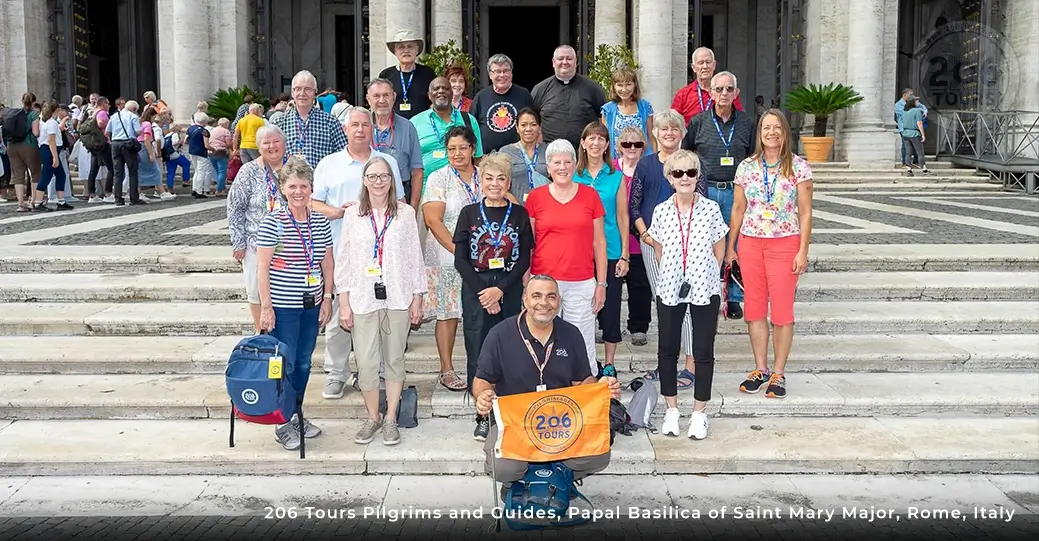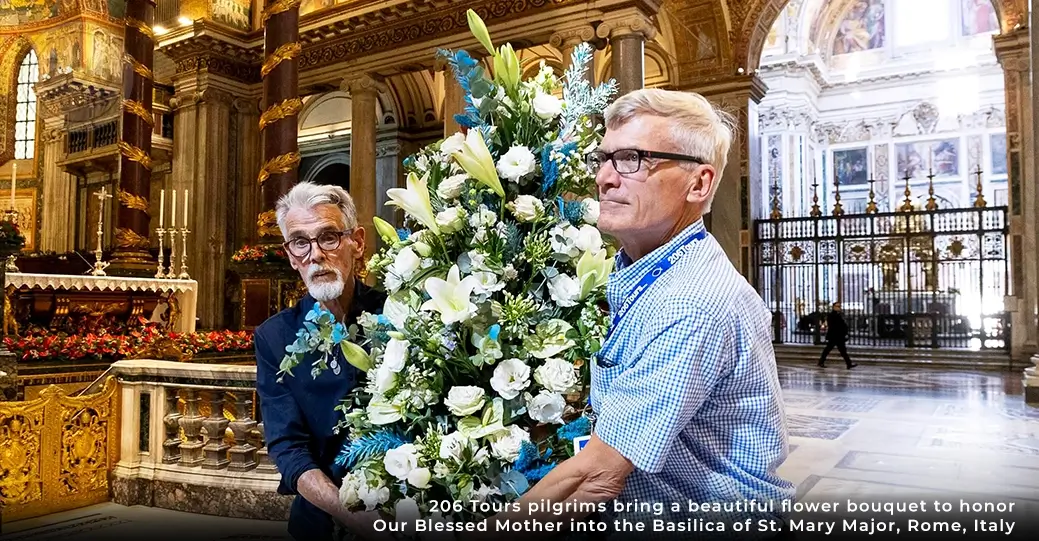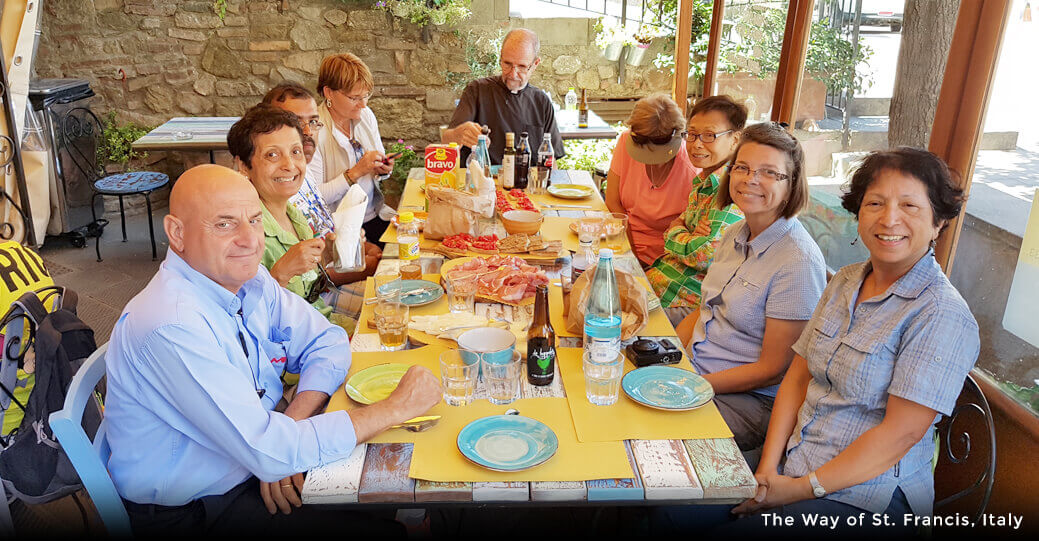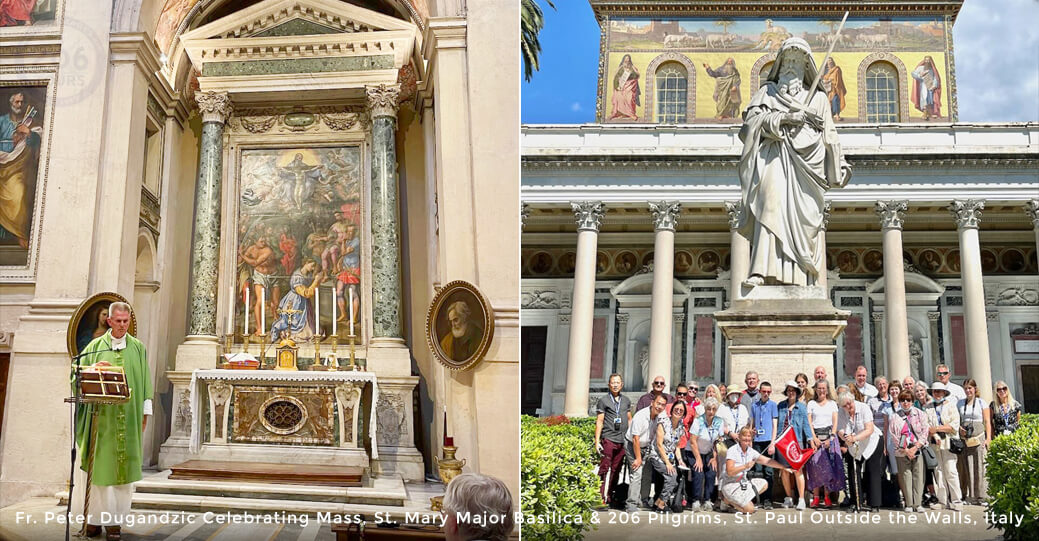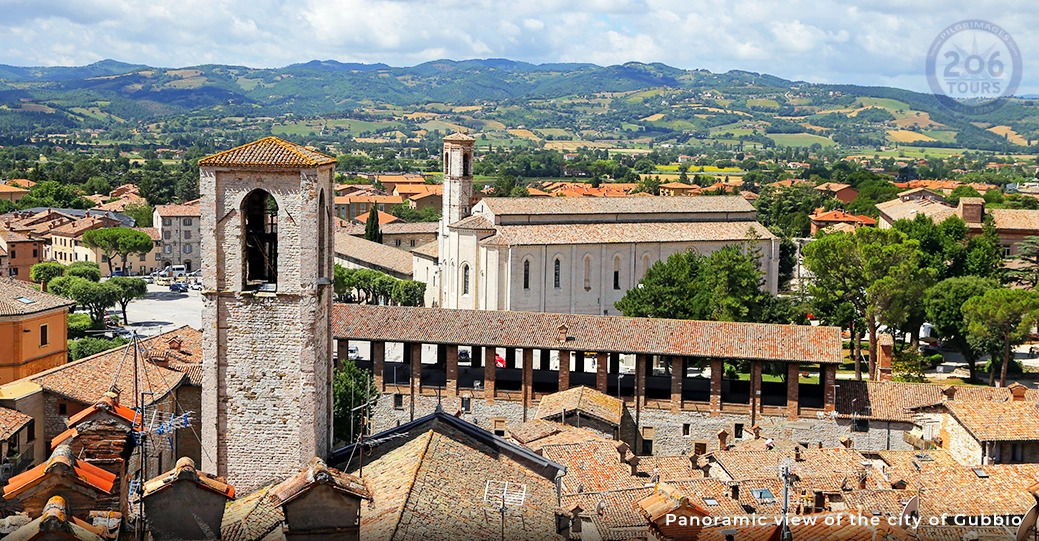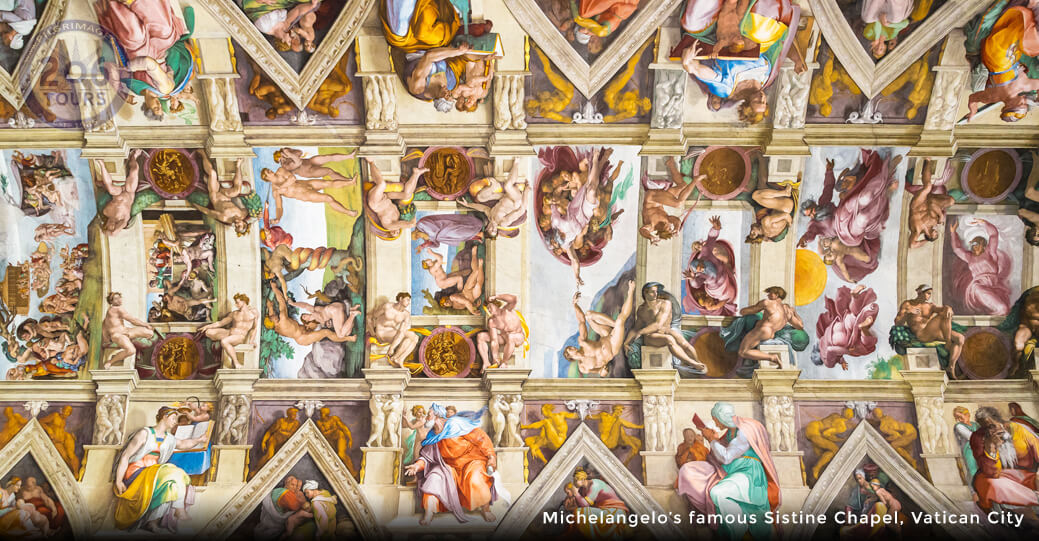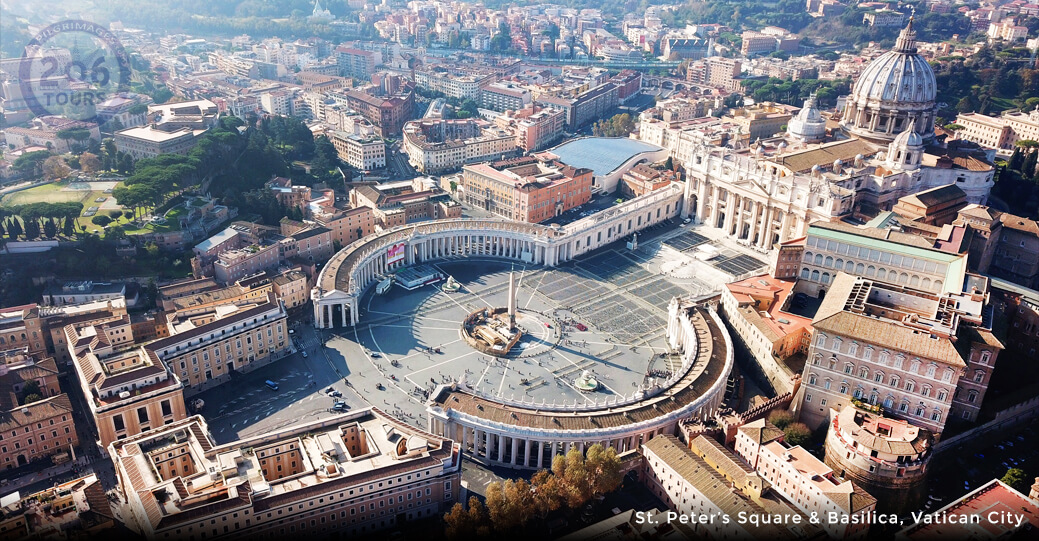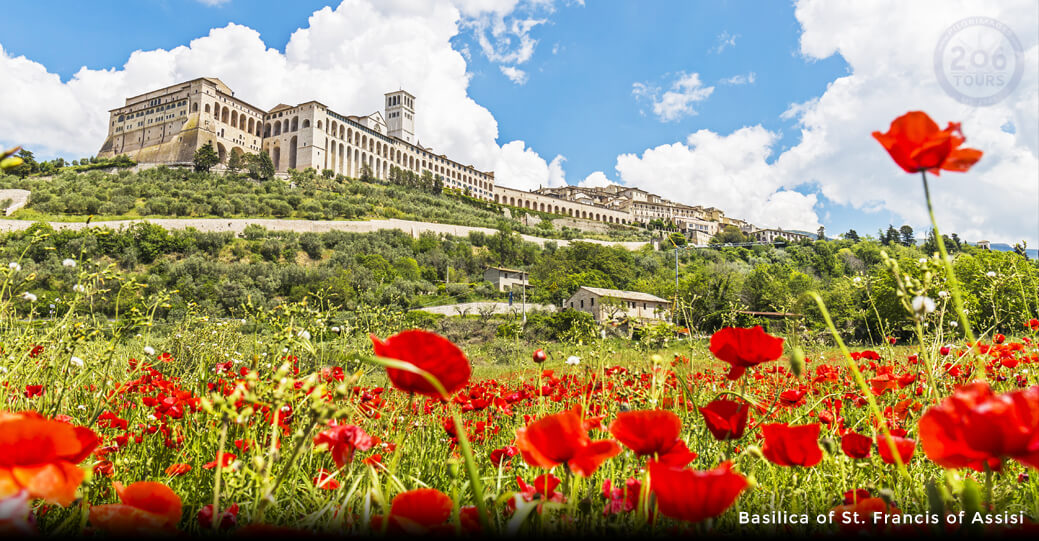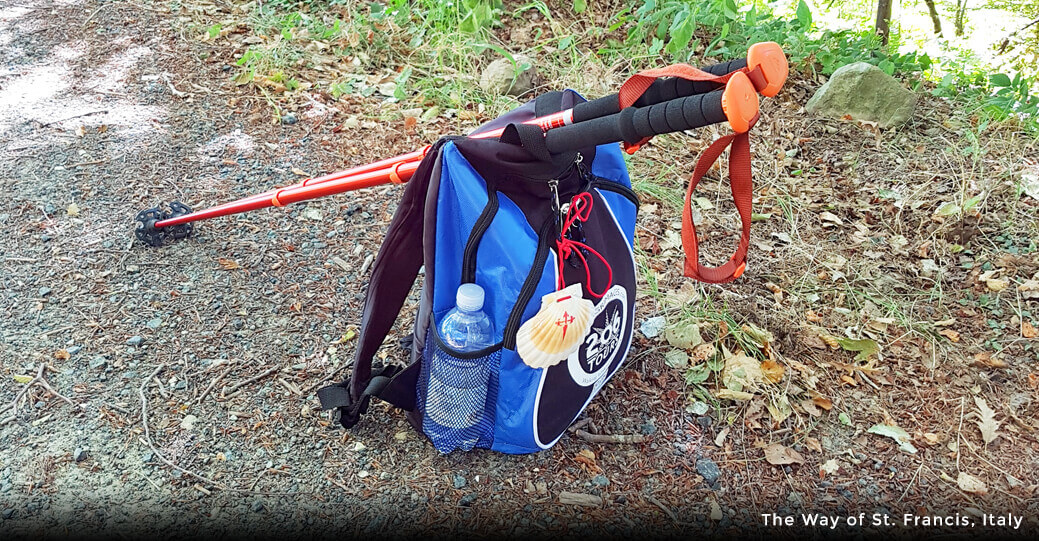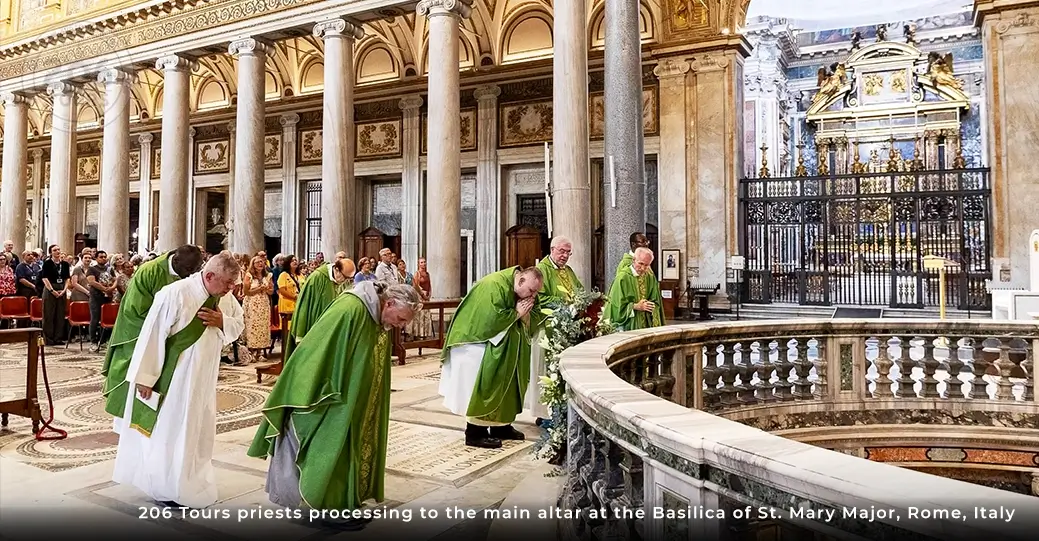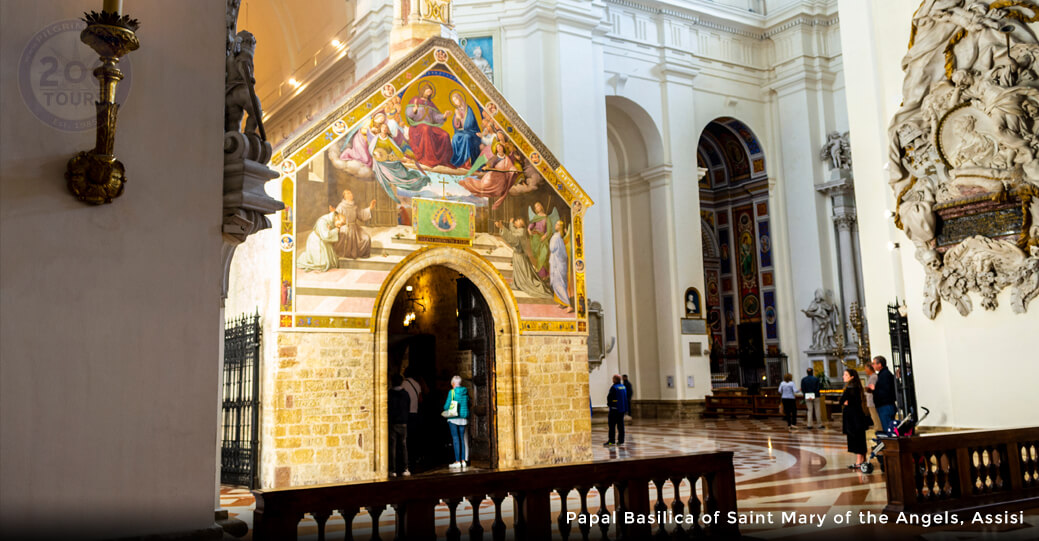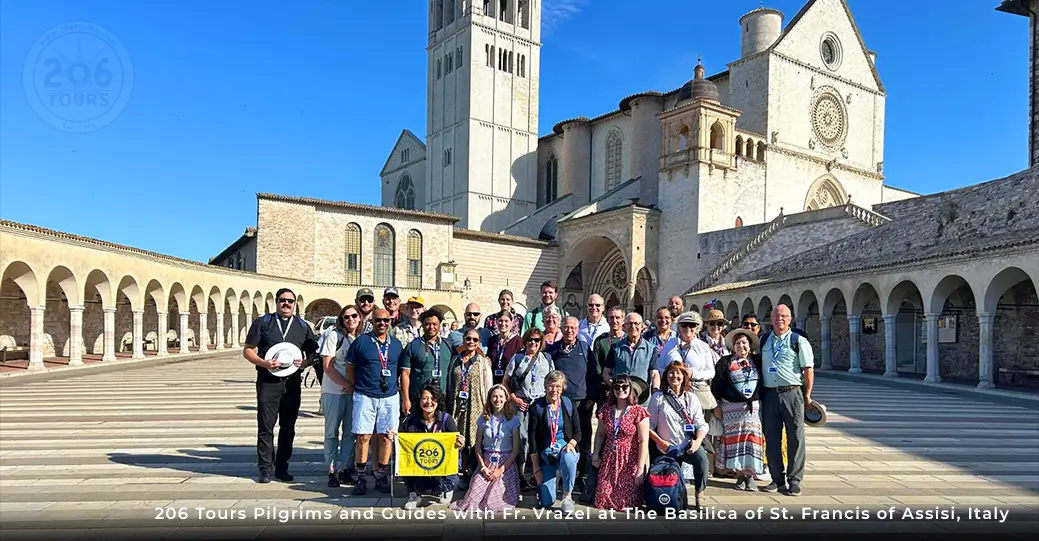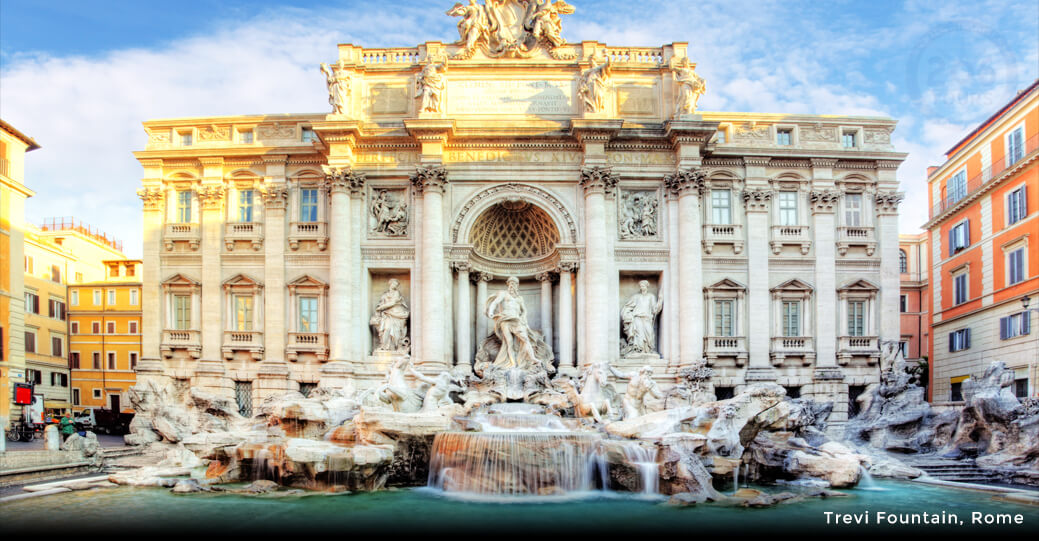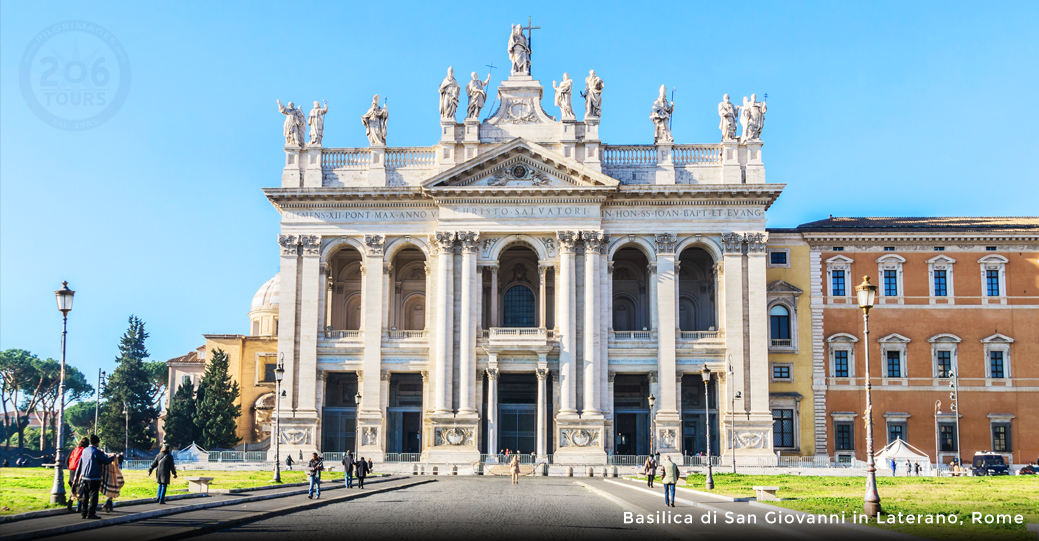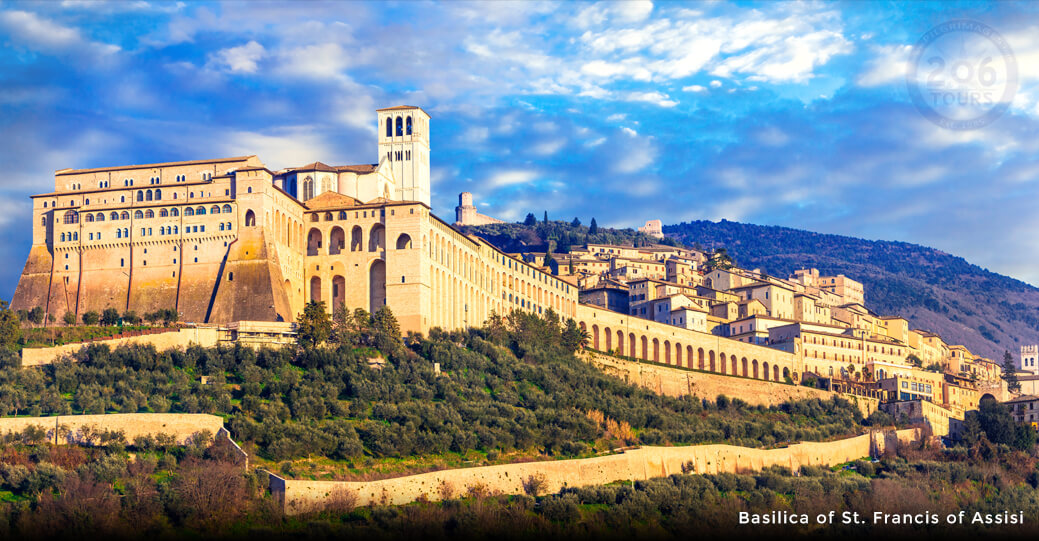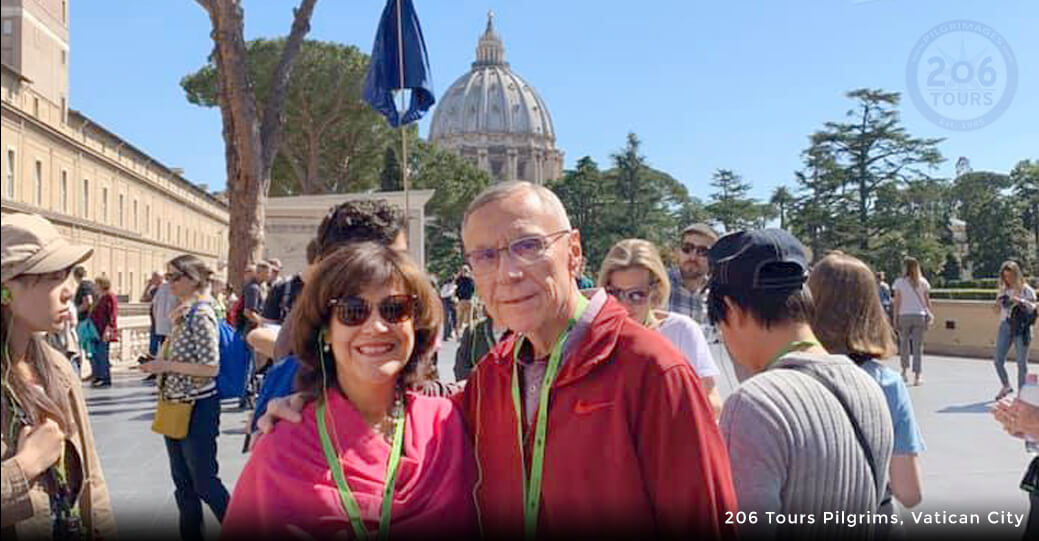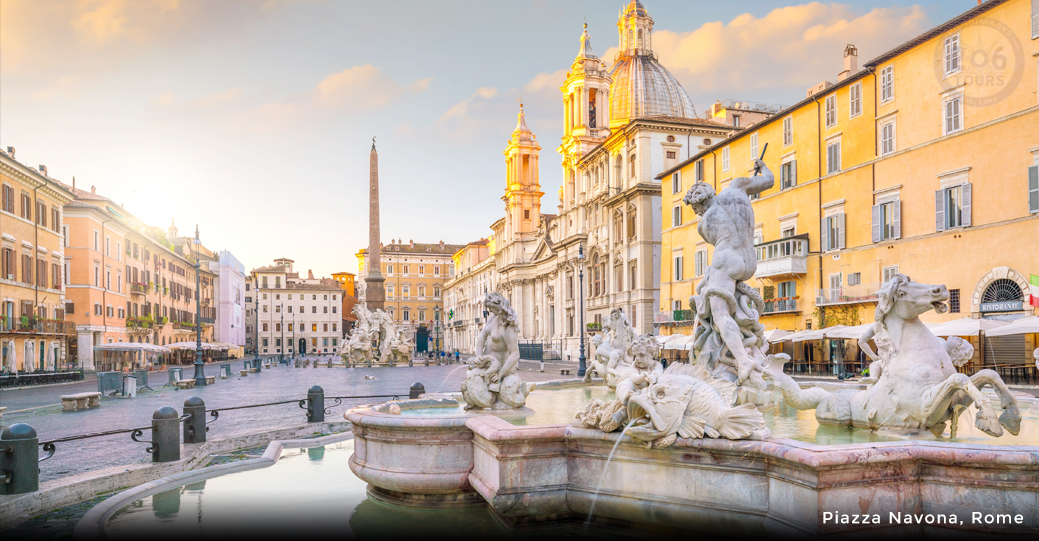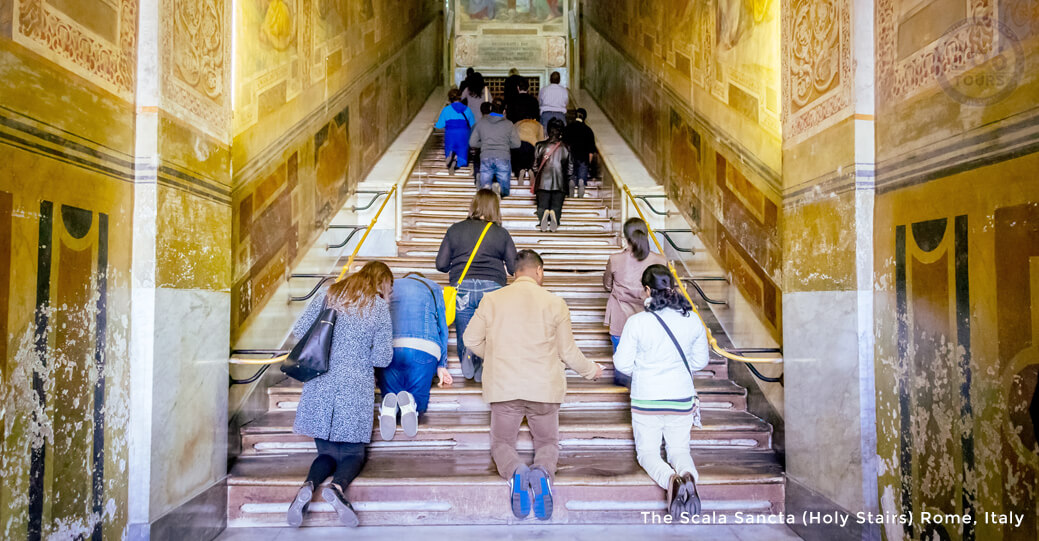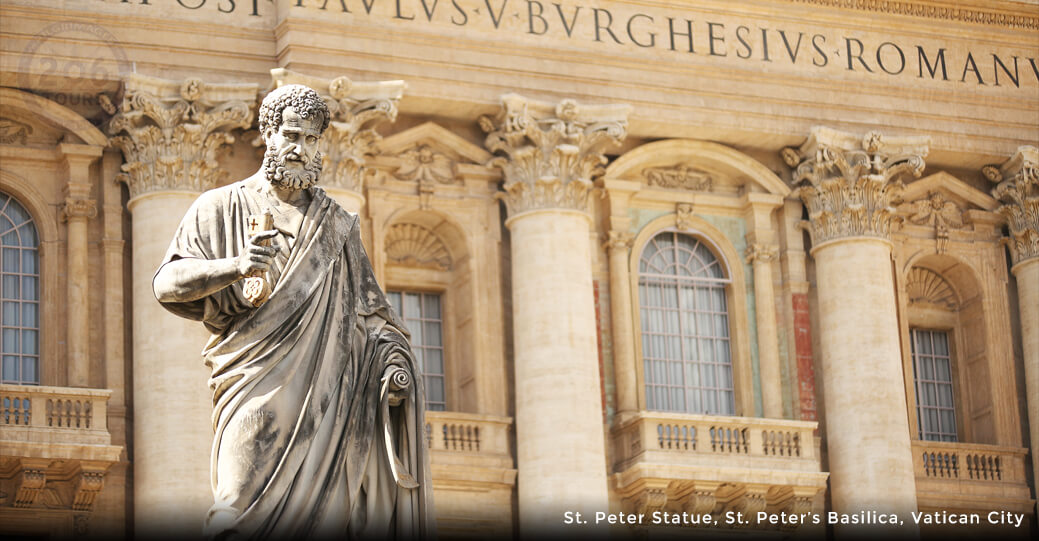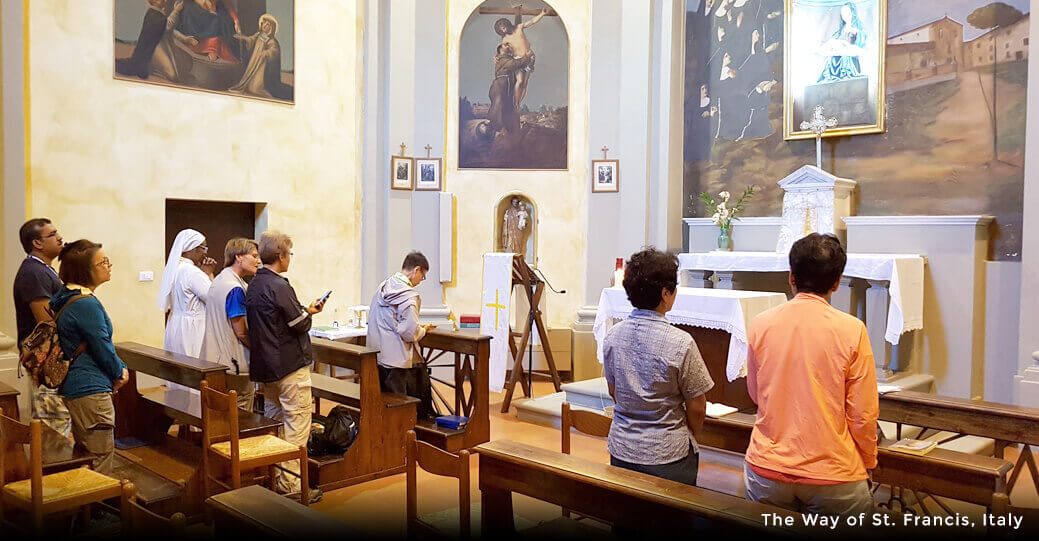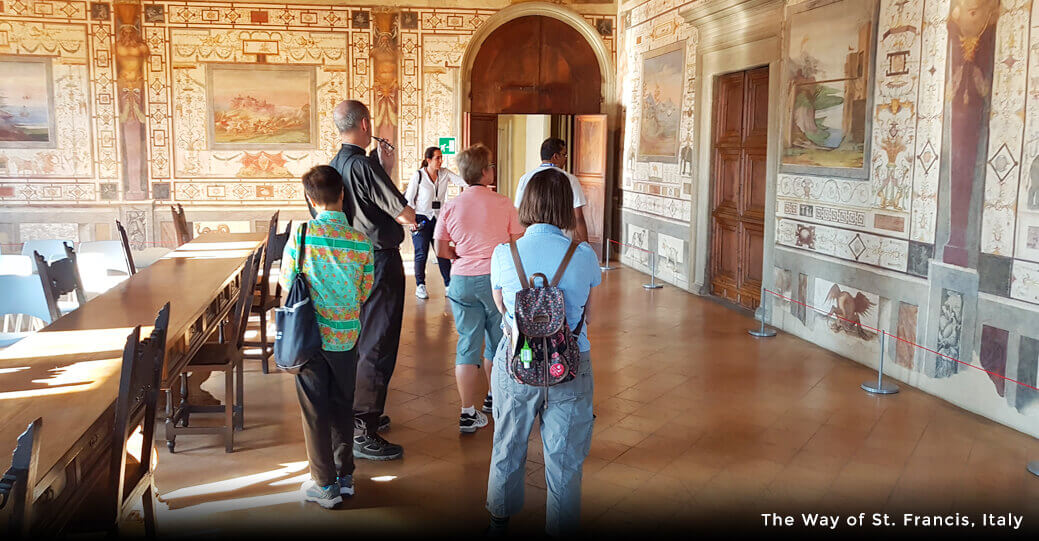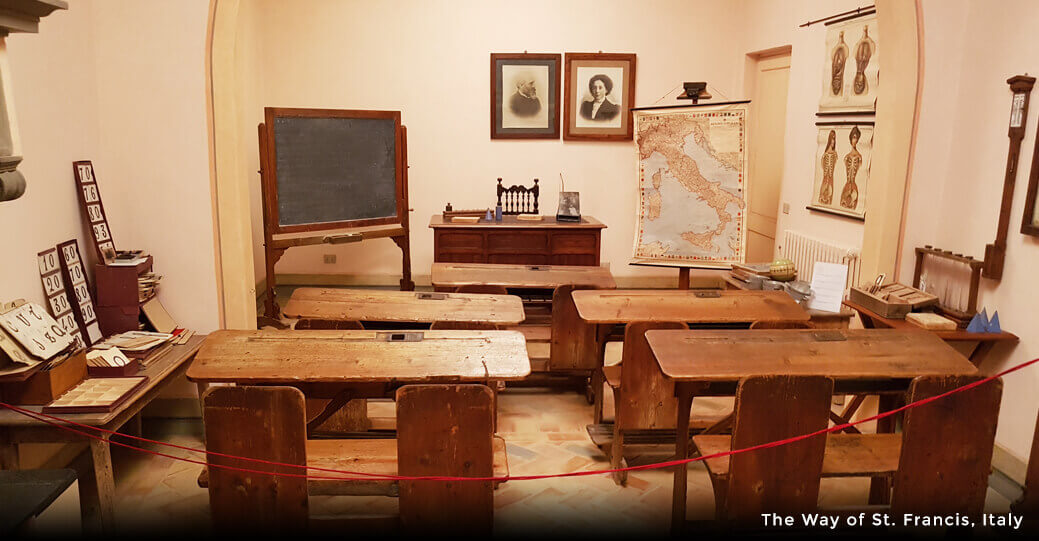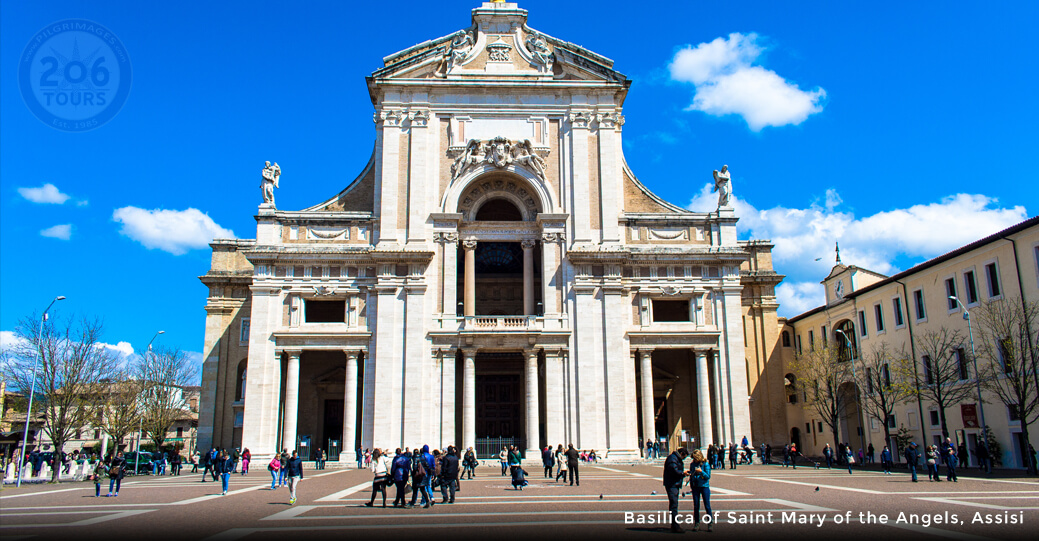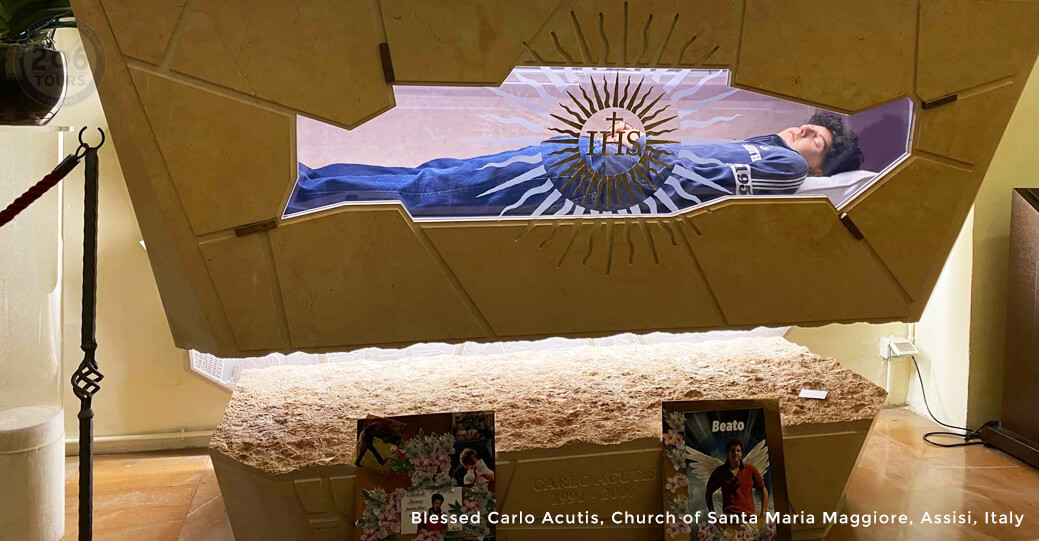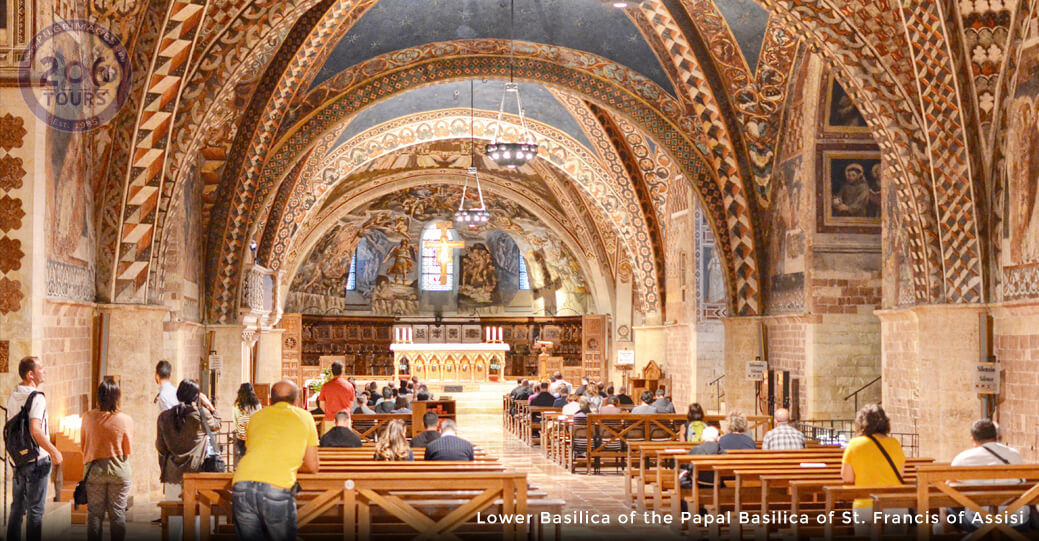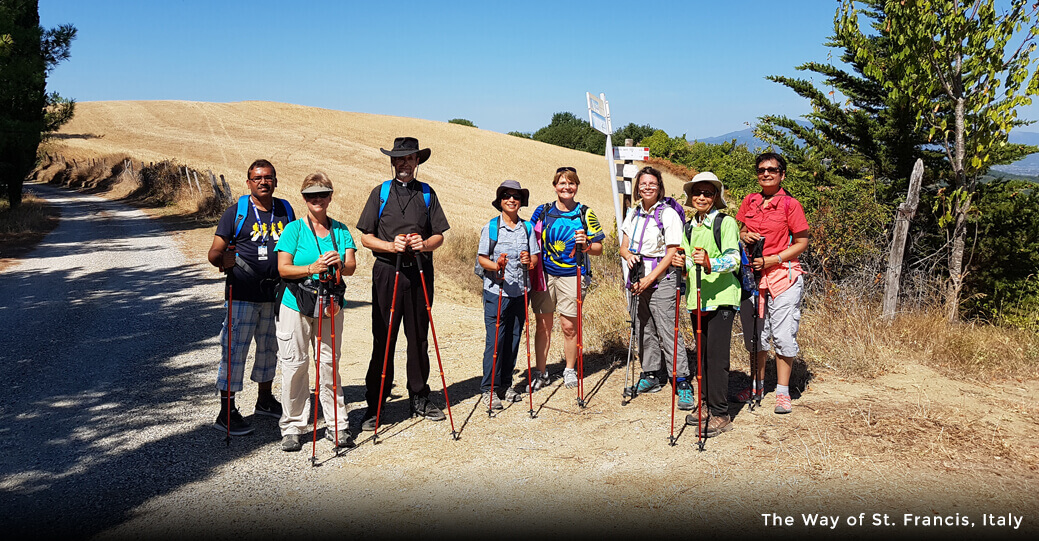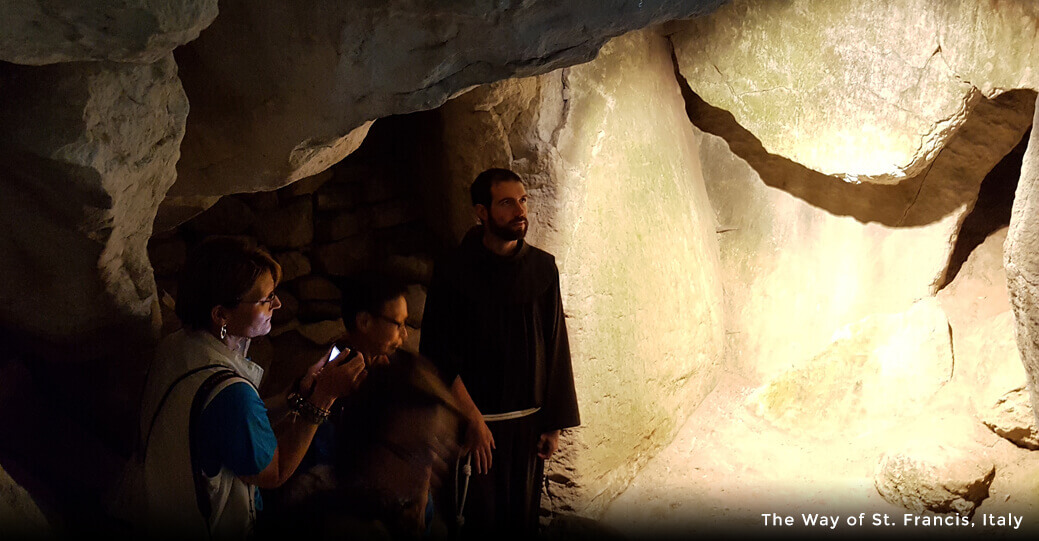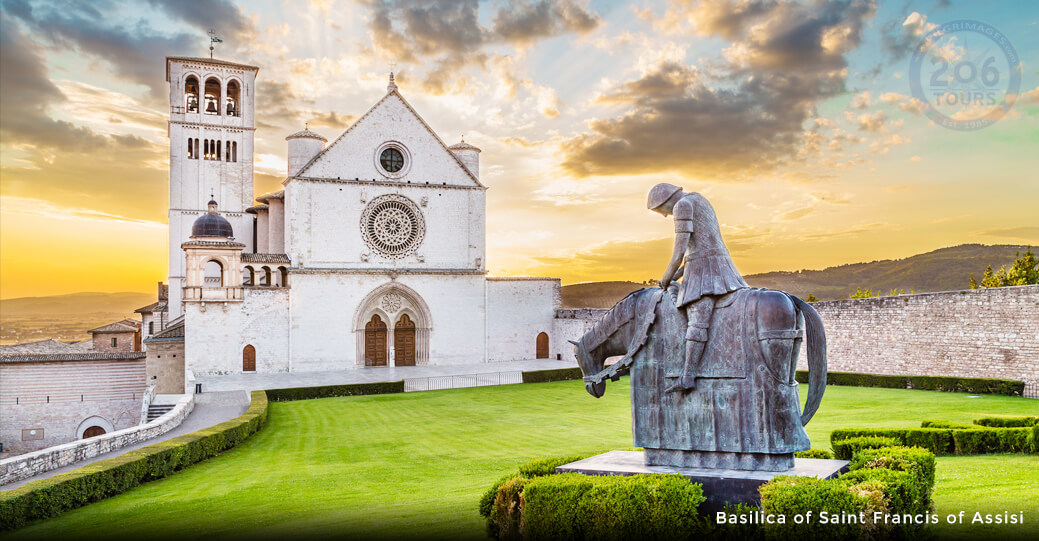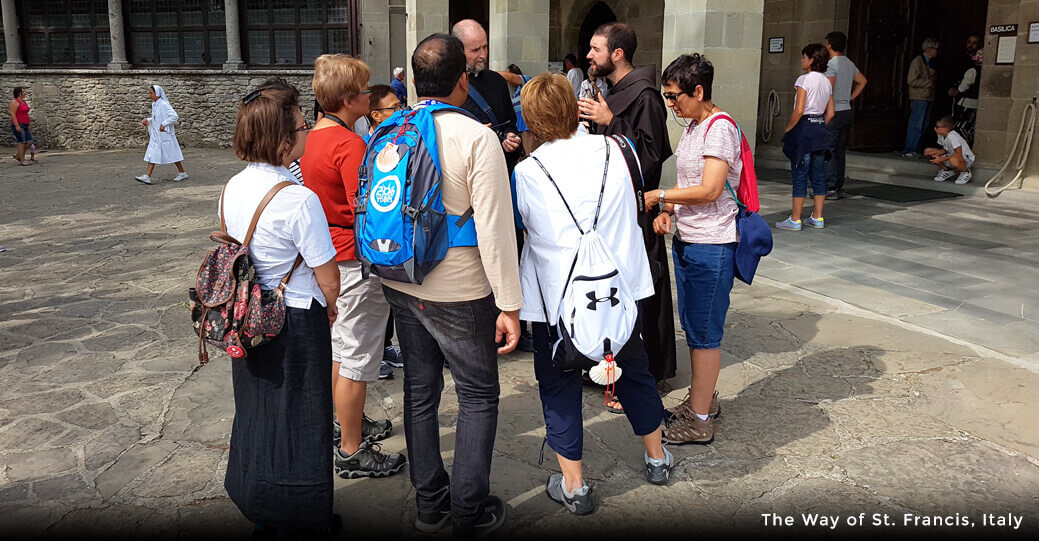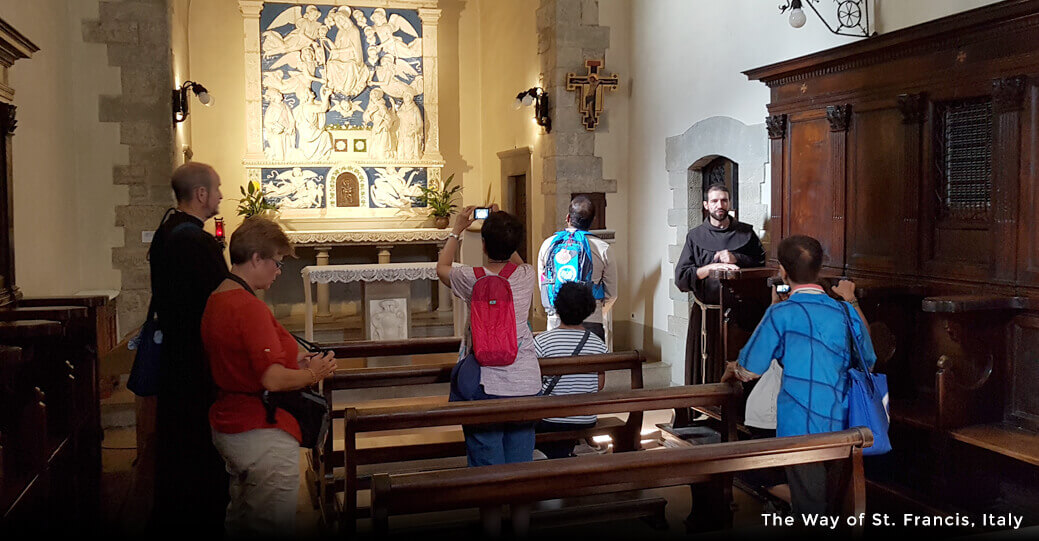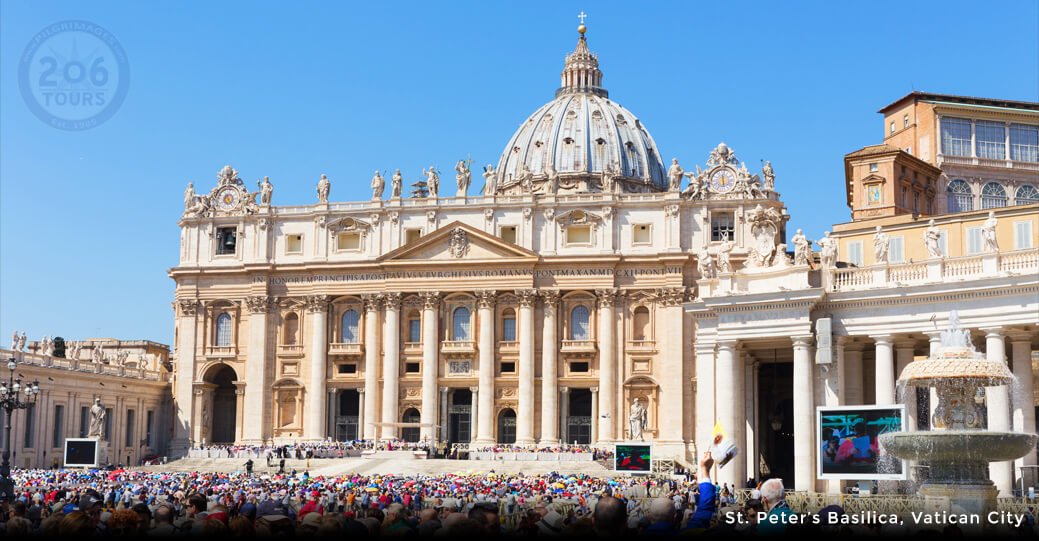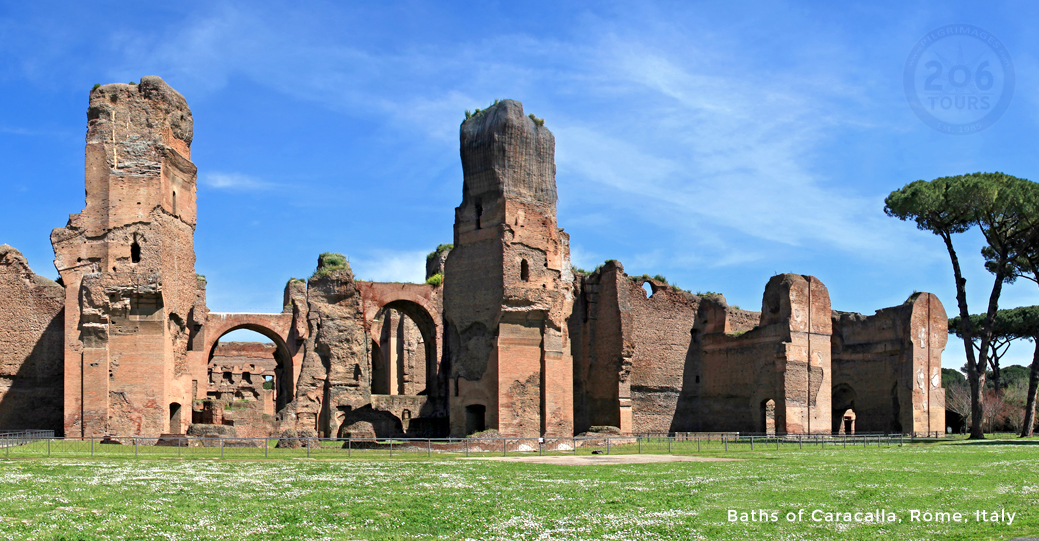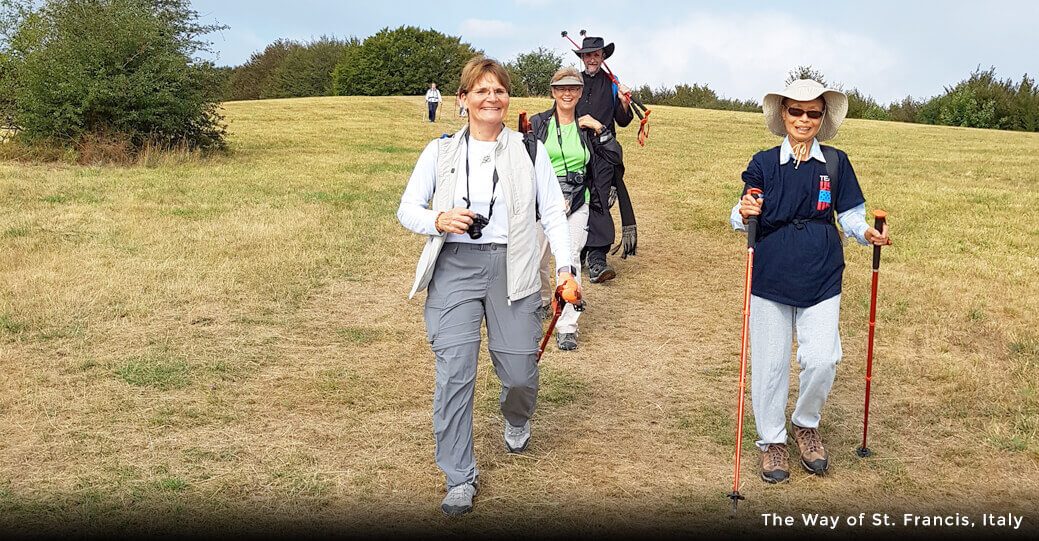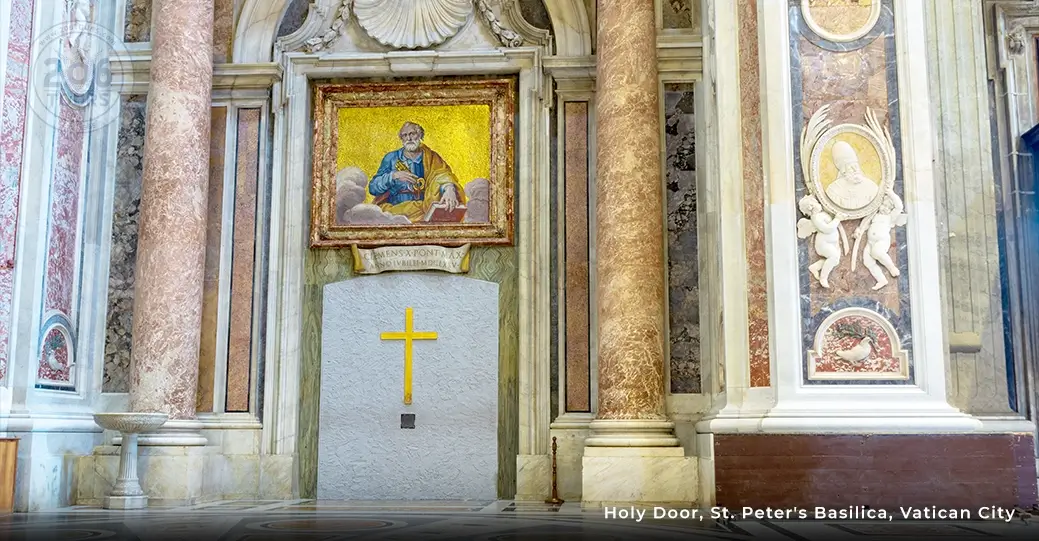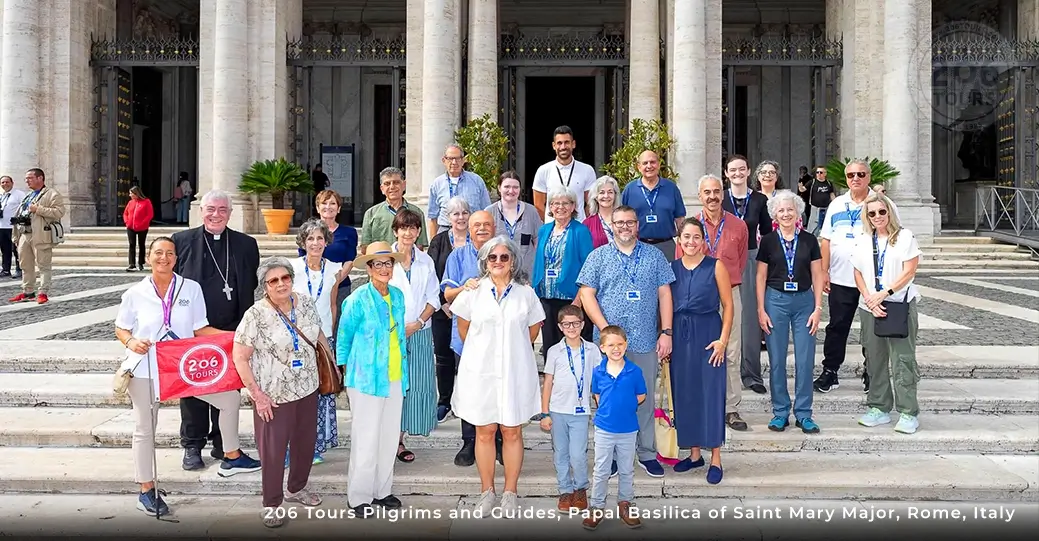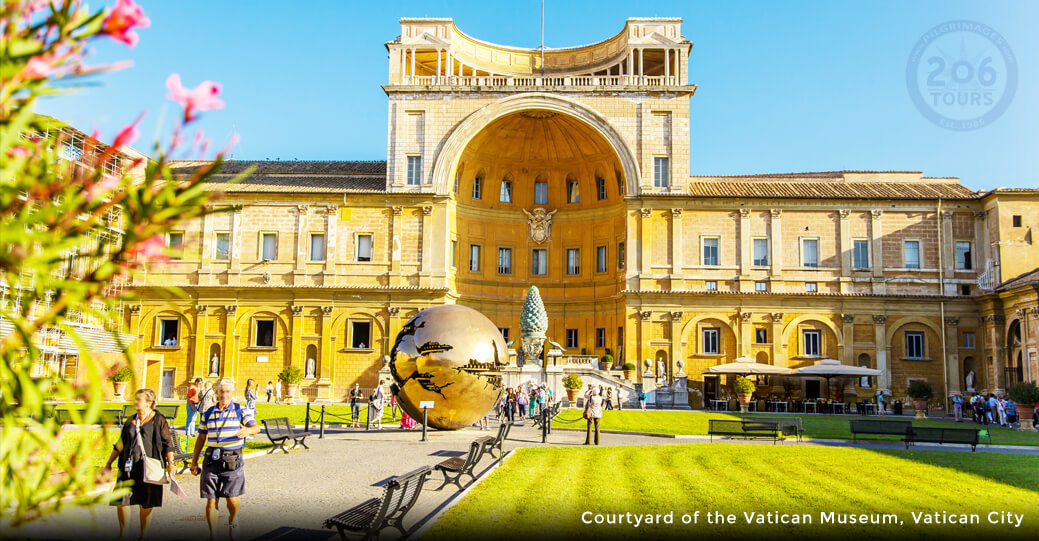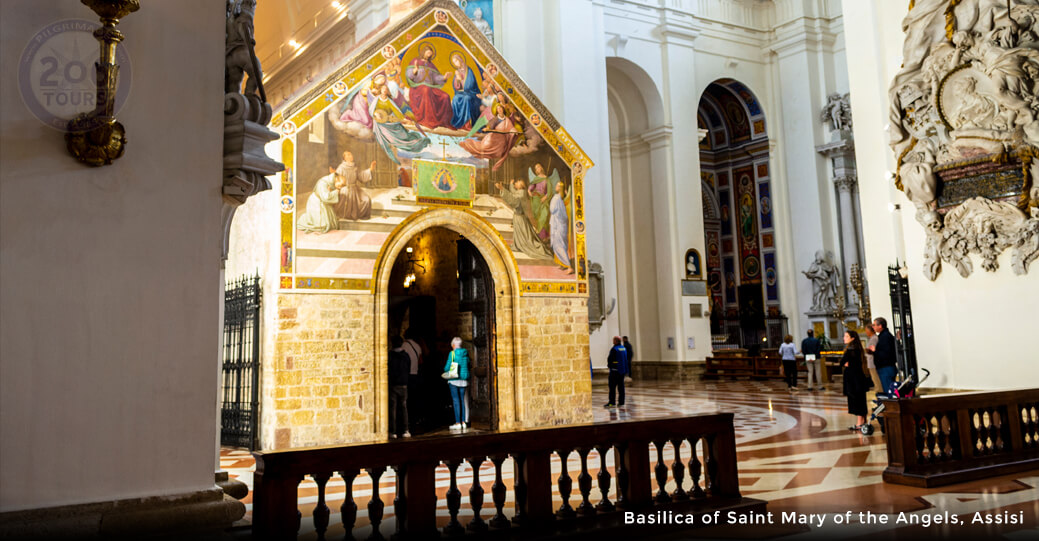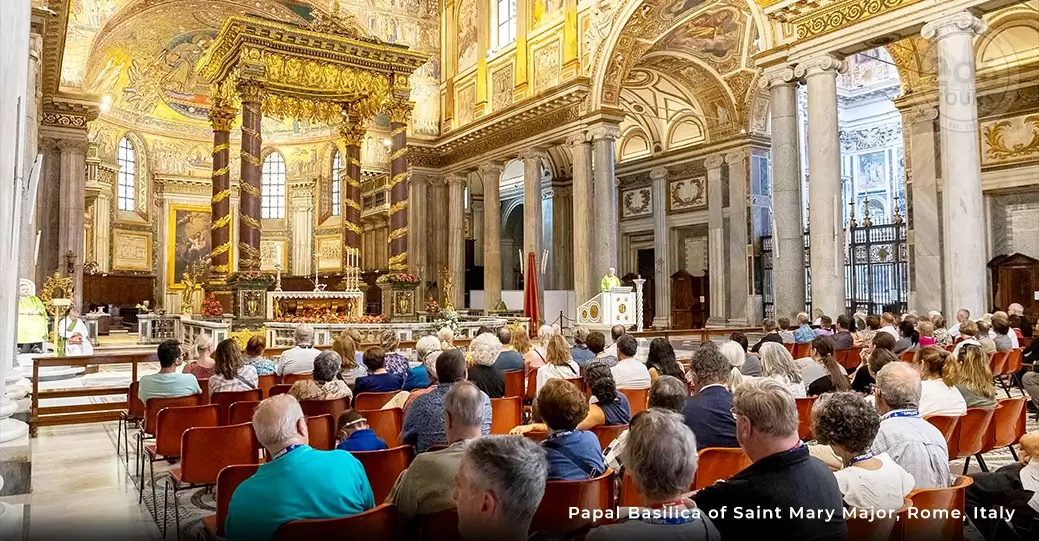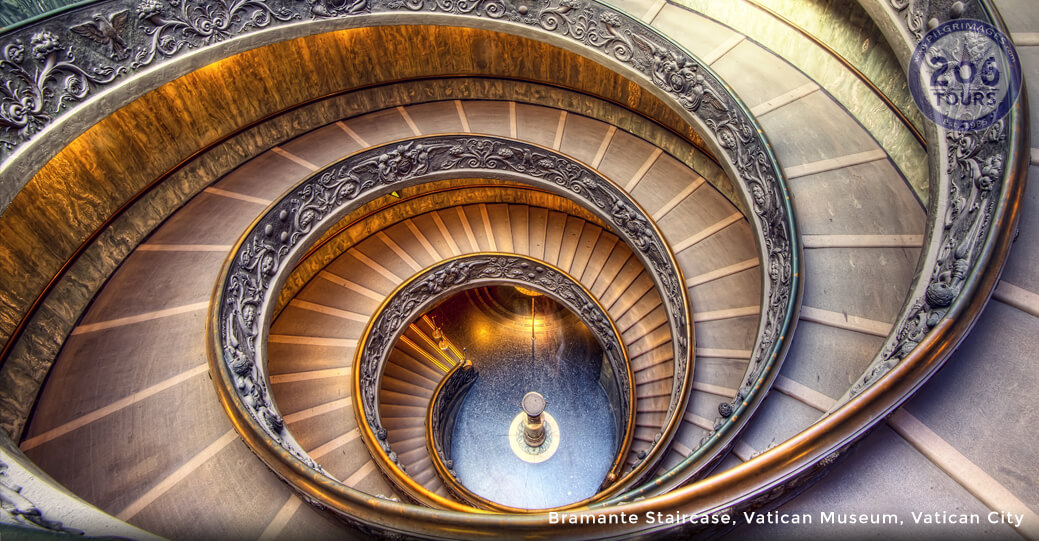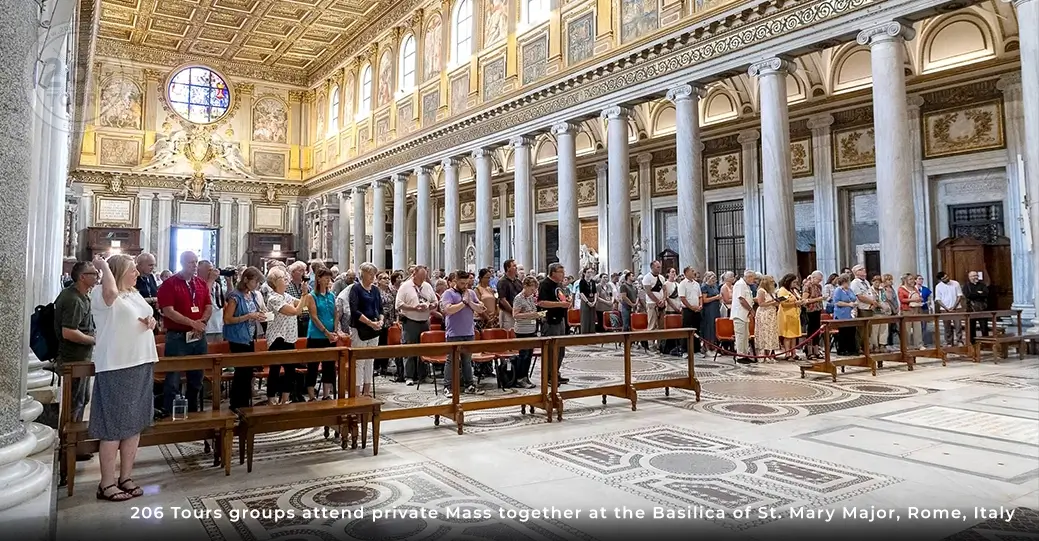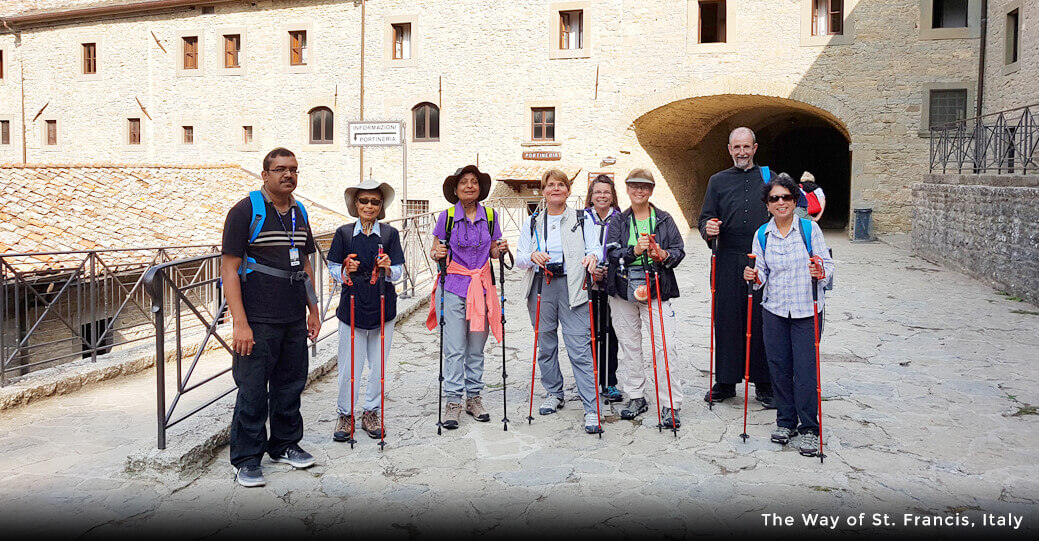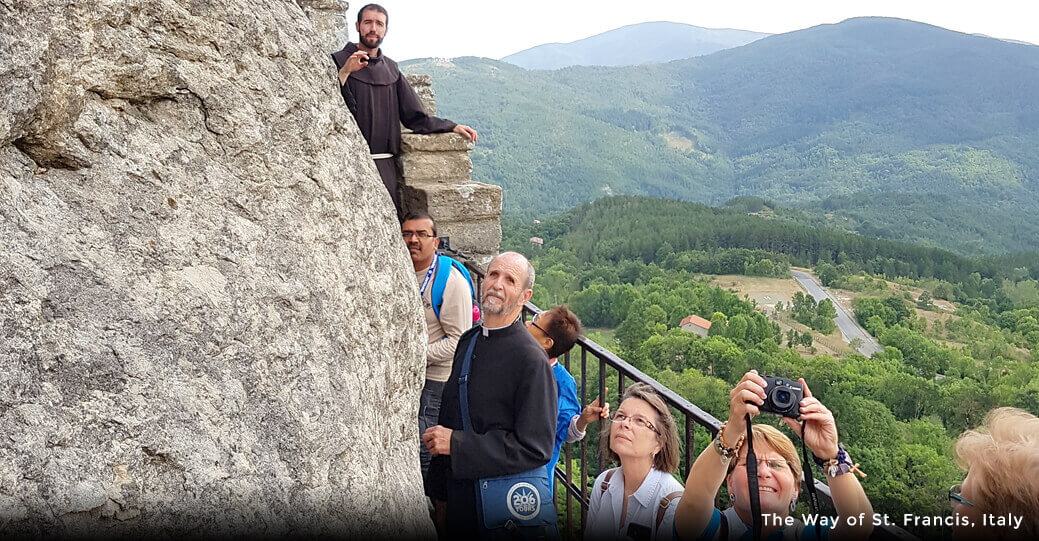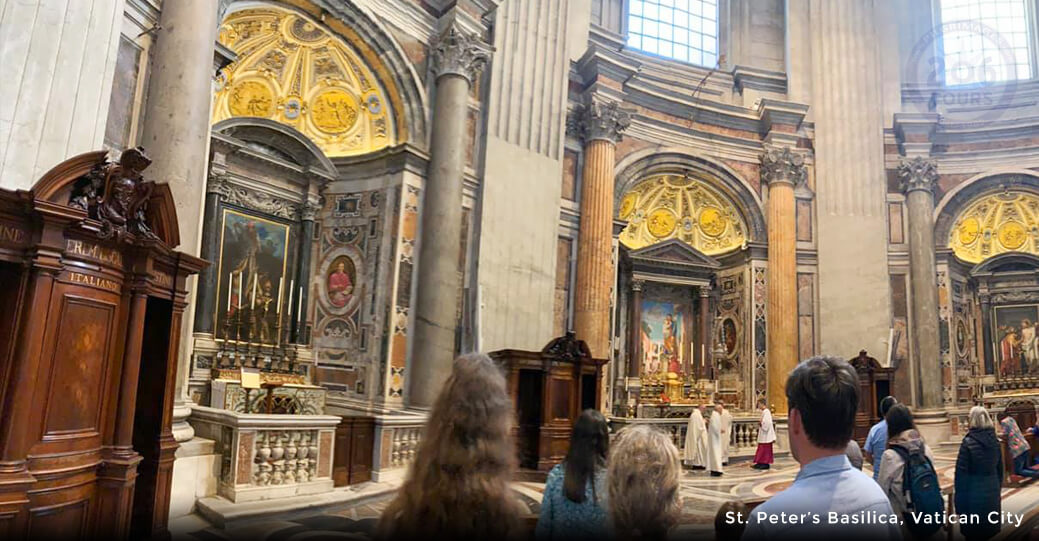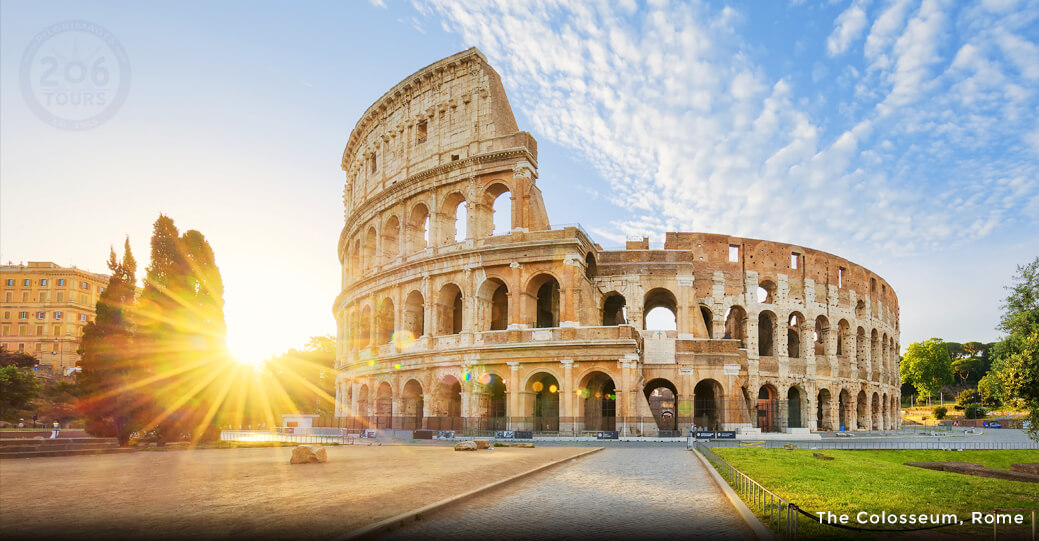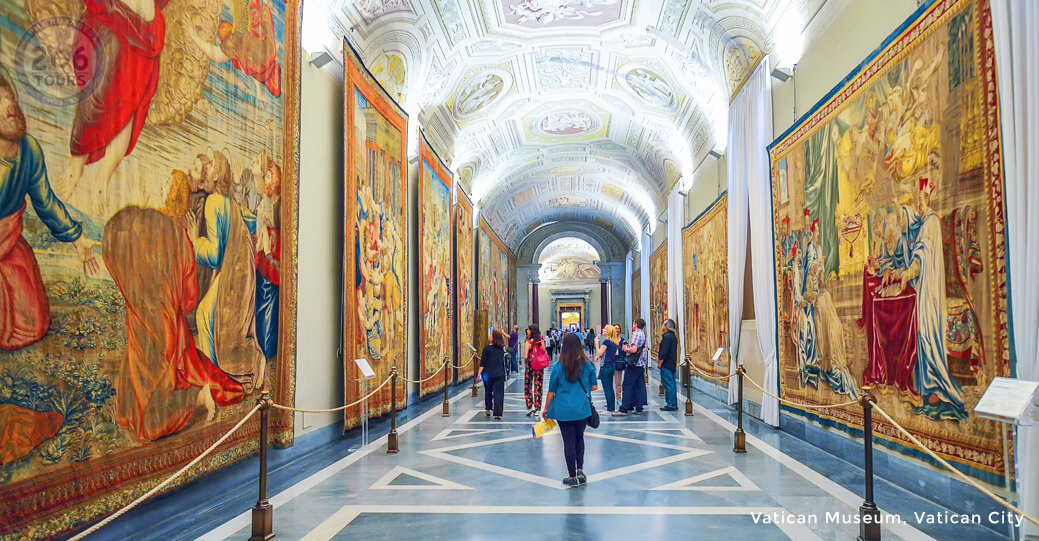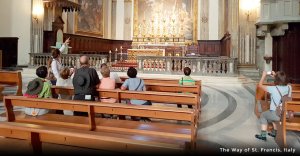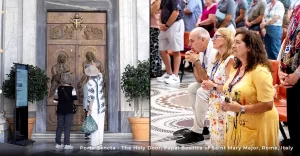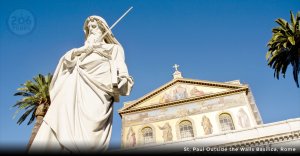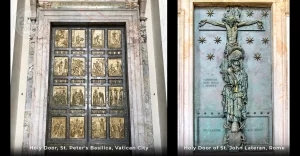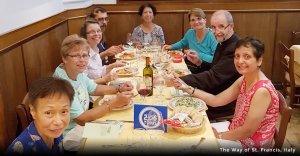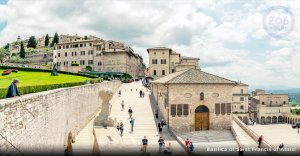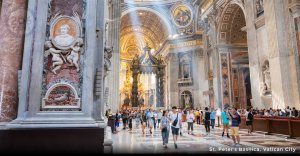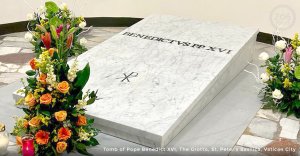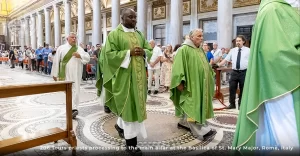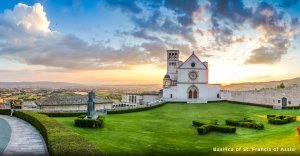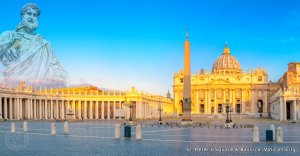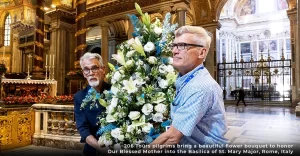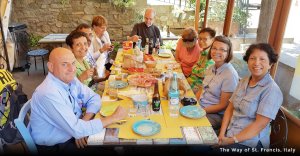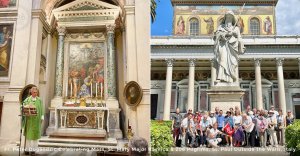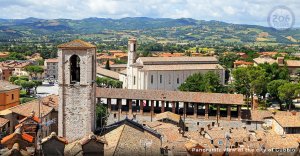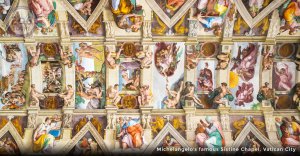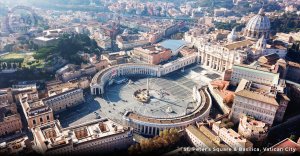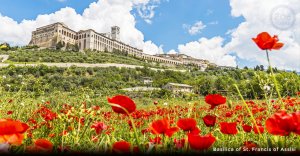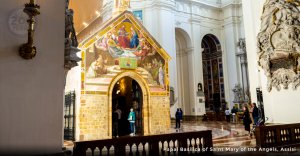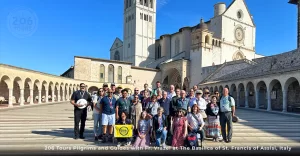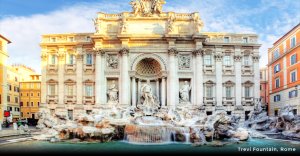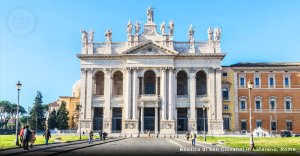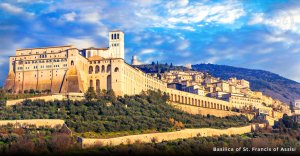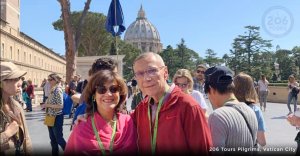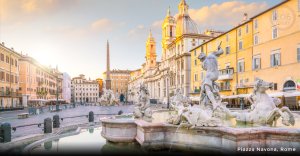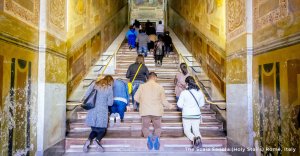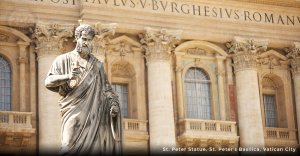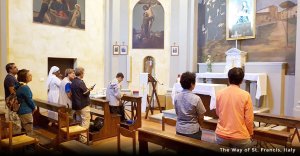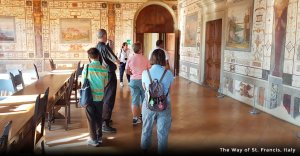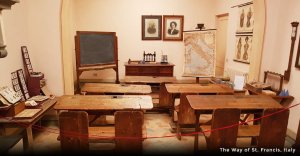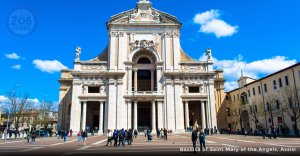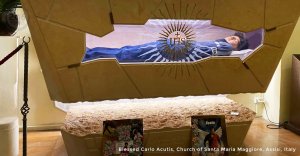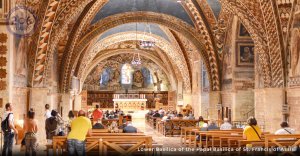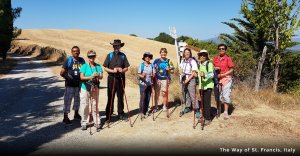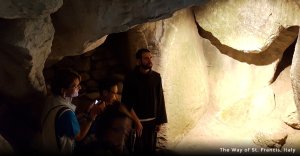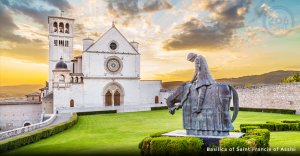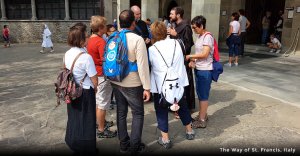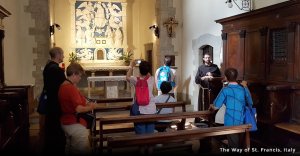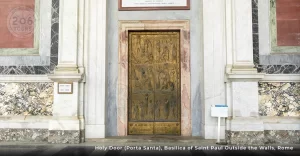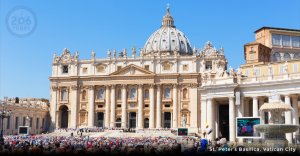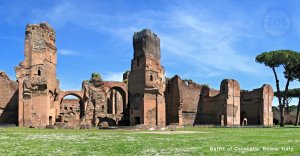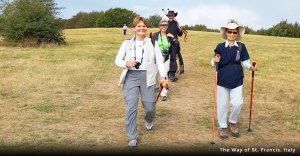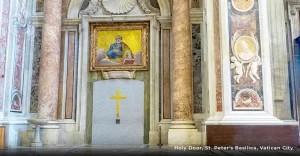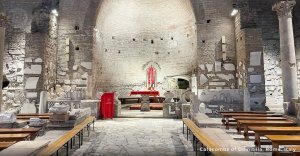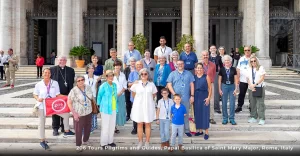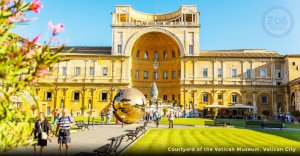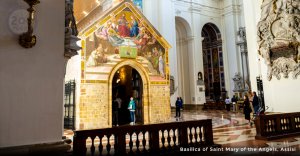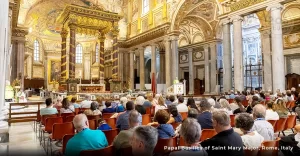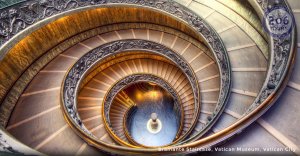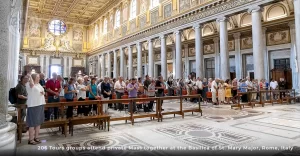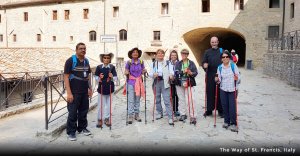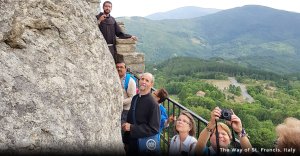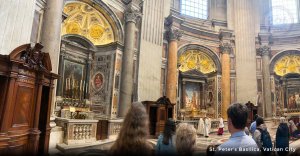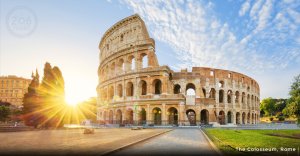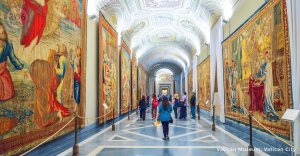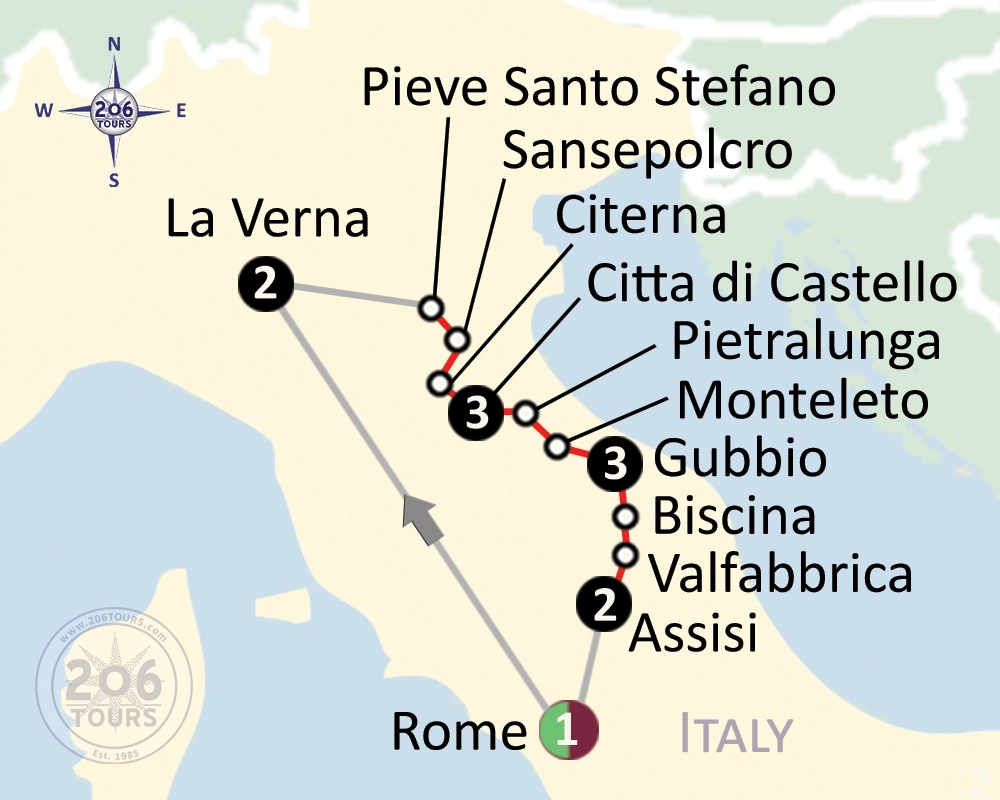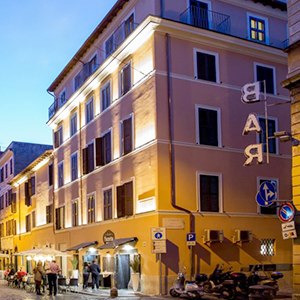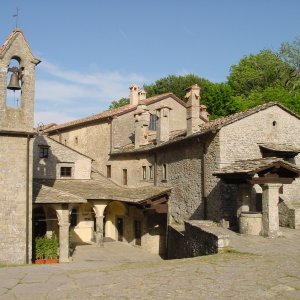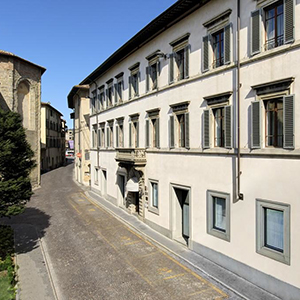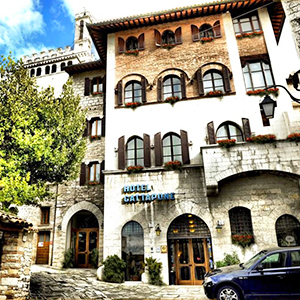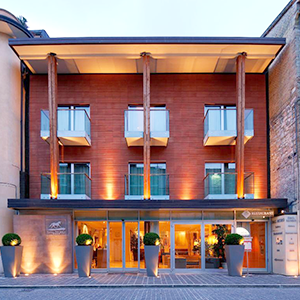Your trip includes
- Round-trip airfare from your desired Airport
- All airport taxes & fuel surcharges
- Hotel accommodations: (or similar) in double occupancy
- ~ 1 night: Hotel Della Conciliazione, Rome, Italy
- ~ 2 nights: La Verna Sanctuary, La Verna, Italy
- ~ 3 nights: Hotel Tiferno or Hotel Park Ge.Al., Citta di Castello, Italy
- ~ 3 nights: Hotel Gattapone or Hotel Villa Montegranelli, Gubbio, Italy
- ~ 2 nights: Dal Moro Gallery Hotel or Giotto Hotel or Hotel Dei Priori, Assisi, Italy
- Breakfast and Dinner daily
- 8 picnic lunches
- Wine with dinners
- Free WiFi & Water on bus
- Assistance of a professional local guide throughout
- Sightseeing and admission fees as per Itinerary
- Catholic Priest, Mass daily & Spiritual activities
- Luggage handling (1 piece per person)
Not Included
- Lunches on non-walking days, tips to your guide & driver.
Itinerary
Day 1: Depart for Rome
Make your way to your local airport where you will board your overnight flight(s). Your meals will be served on board.
Day 2: Rome
Upon your arrival in Rome, you will collect your luggage in the baggage claim area and proceed to the Arrivals Hall. There you will be greeted by your tour guide and/or driver. They will escort you to the bus and your group will be transferred to your hotel in Rome for dinner and an overnight stay.
Day 3: Rome - La Verna
Today we begin our Franciscan pilgrimage. After breakfast this morning we will drive to La Verna (approximately four hours). Following check-in, we will soak in the sacred grounds of La Verna Sanctuary. St. Francis of Assisi visited this site six times in his life, the last time being in 1224. In 1224 St. Francis visited La Verna to pray and fast for 40 days, and it was during this time that he received the stigmata. The rock he was sitting on when he received the holy marks of Christ’s wounds can still be seen and venerated. At La Verna, we will pray in the Chapel of the Stigmata, the Basilica, and the Chapel of St. Mary of the Angels. We will also get the chance to admire the beautiful artwork of Andrea della Robbia. Following this visit, we will enjoy dinner and a restful night’s sleep in La Verna. We will need our sleep before tomorrow when our walking tour begins!
Day 4: La Verna - Pieve Santo Stefano
(Walking day 9.4 mile / 15 km)
Today our walking pilgrimage to Assisi officially begins! Following breakfast we will venture through the mountains of Tuscany. With the guidance of Our Lord, and through the spirit of St. Francis, you will become an authentic pilgrim. You will be taken on a deep spiritual journey as you walk along the physical one. Your first official day of walking will culminate in Pieve Santo Stefano. Historically, Pieve is mentioned as early as 723. We have documentation that a gentleman of Citta di Castello donated a monastery to the Benedictine monks. In 1589, a supernatural event brought Pieve into the limelight. Hordes of angels bearing burning torches were seen at nighttime, heading in procession toward a sacred image painted on the wall along the road to Sansepolcro. There you can still find the Sanctuary of the Madonna dei Lumi (Virgin of the Lights). In the parish church, dating back to 1200, you can admire a beautiful glazed terracotta altar frontal by Andrea della Robbia. We will end our day with dinner and an overnight stay in La Verna or Sansepolcro.
Day 5: Pieve Santo Stefano - Sansepolcro
(Walking day, 11.2 mile / 18 km)
This morning we will journey from Pieve Santo Stefano, alongside the river Tiber (the same that flows through Rome!), to Sansepolcro. This town owes its name and its foundation to two pilgrims. Arcano and Egidio – a Greek and a Spaniard – returned from a trip to Jerusalem with some precious relics. They stopped at a locality in the Tiber Valley and spent the night near a spring in the walnut-tree woods. During the night, Arcano had a vision. God called him to stay and found a town in honor of the Holy Sepulcher of Christ. Around the year 1000, a church was built on the site of the first chapel. While dedicated to St. John the Apostle, the church has always been known as “Santo Sepolcro”: the Holy Sepulcher. Conserved inside the Cathedral of Sansepolcro is a valuable representation of Christ on the Cross in priestly and royal attire. Named “Volto Santo” (Holy Face), the crucifix is a 12th-century copy of the original, which represents one of the first artistic portrayals of Christ on the cross. This image has always been venerated as an acheiropoieta (a sacred image not made by human hands!). After worshiping Christ crucified, we will have dinner and stay overnight in either Sansepolcro or Citta di Castello.
Day 6: Sansepolcro - Citerna
(Walking day, 12.4 mile / 20 km)
Today we will walk the winding roads through the lowland crossing the Tiber Valley – today, we enter Umbria! The pilgrimage will lead us through the fields of the valley up to the gates of Citerna. Citerna is a small medieval town founded by the Etruscans. The fortress and medieval walls that surround the town will transport you to another age, along with the covered communication trench that stretches along them. According to tradition, when St. Francis stayed here he blessed the hill, calling it “the sacred mountain.” The Church of St. Francis and that of St. Michael the Archangel, which conserves a beautiful panel by Pomarancio, are well worth a visit. We will enjoy dinner and an overnight stay in Citta di Castello.
Day 7: Citerna - Citta di Castello
(Walking day, 12.4 mile / 20 km)
Today we will trek over the hills on the right-hand side of the Tiber valley to reach Citta di Castello. The town lies on the left bank of the Tiber and was founded by the Umbri, before becoming a Roman municipium. Near here Pliny the Younger owned an elaborate suburban villa in the 1st century AD. In the 12th century, Citta di Castello became a free municipality with the name Civitas Castelli. Subjugated by Florence and then by Perugia, in 1400 it came under the rule of the noble Vitelli family, who embellished the town with churches and palaces. With the installation of Cesare Borgia, it came under the power of the papacy until the unity of Italy. It is still surrounded by a mighty town wall dating back to 1500. Of great interest is the municipal art gallery, with masterpieces by Raphael, Luca Signorelli, Giovanni, Andrea della Robbia, Pomarancio, and Ghirlandaio. Following our visit to the town, we will enjoy dinner and an overnight stay in Citta di Castello.
Day 8: Citta di Castello - Pietralunga
(Walking day, 17.4 mile / 28 km)
You have now reached the second half of your walking pilgrimage! Walking out of Citta di Castello, we will be able to see one of the most famous former tobacco curing plants in all of Italy. During the 1950s this area became very important for Italian tobacco production. Today we will be leaving the Tiber valley, climbing the roads nestled in green, silent hills and winding along a succession of curves that offer new views at every turn. Umbria is at its best here! At the end of our hike today, we will reach the small town of Pietralunga, founded by local Umbri populations. Numerous traces of villas and aqueducts remain from the Roman period. Pietralunga retains the appearance of a medieval town, encircled by walls and clustered around a Lombard fortress from the 8th century. The growth in Christianity here is associated with the figure of St. Crescentinus, to whom tradition attributes the killing of a dragon. The remains of St. Crescentinus are now buried in Urbino Cathedral. The mighty remains of the Lombard fortress can be admired in the piazza. We will end our day with dinner and an overnight stay in Gubbio.
Day 9: Pietralunga - Monteleto - Gubbio
(Walking day, 9.4 mile / 15 km)
After leaving Pietralunga today, we will come upon the Abbey of St. Benedict. Inside the abbey, once populated by a community of Benedictine monks, there is a memorial stone confirming the popular belief that St. Francis stopped here on his way to La Verna. The panorama we will admire is truly magnificent! Upon our arrival to Monteleto, we will be transferred to the enchanted Gubbio. In this town, you can still hear the symphony of bells ringing early each morning. Gubbio is painted on a hill—a gorgeous backdrop to towers and houses encompassed by walls. It stands still in time. It is also where St. Francis famously faced a terrible wolf afflicting the town. Having compassion for the people of Gubbio, he bravely went towards the wolf (who was waiting for him with an open mouth) and made the sign of the cross over him. The great wolf instantly closed his mouth and laid himself down at the feet of St. Francis. After a visit to the town, we will enjoy dinner and an overnight stay in Gubbio.
Day 10: Gubbio - Biscina
(Walking day, 17.4 mile / 28 km)
Your journey is almost over as we follow the “Franciscan Path of Peace”: a praiseworthy initiative created for the 2000 Jubilee Year that walks the route of Francis from Gubbio to Assisi. Your group will cross Gubbio valley, admire one last postcard view of the beautiful town, and emerge over the Umbrian hillside. At the summit of the last hill for the day, in proximity to the River Chiasco, is the Biscina Castle. The construction date of the fortress is not known, but it is certain that it existed at the end of the 10th century. It is an irregular structure that envelops the inner courtyard and is open to the east, emerging above smaller sites such as the church and the valley below. We will conclude our long walking day with dinner and an overnight stay in Gubbio. Tomorrow we face Assisi!
Day 11: Valfabbrica - Assisi
(Walking day, 8 mile / 13 km)
Today concludes the walking portion of your journey! We will stop in Valfabbrica, known for the Benedictine monastery of Santa Maria in Vado Fabricae. The ancient abbey, documented from the year 820, stands near the River Chiasco. In the Middle Ages, the alliance with Assisi brought great prosperity to the abbey and the castle. In the early 13th century however, clashes with the Perugian feudal lords led to Perugia’s destruction of the town. From Valfabbrica, we will climb through a dense thicket and reach the crest of a hill. From this hill – for the first time – you will clearly see Mount Subasio above Assisi. As we draw closer to Assisi, you’ll be able to make out the bell tower of the upper basilica (to the right of Mount Subasio). After a last steep slope, we will finally enter Assisi through the St. James gate. This is the gate through which pilgrims going to Santiago de Compostela will walk. Descending along a narrow alley we will reach the square in front of the upper basilica of St. Francis. There, beneath the two great churches, lies St. Francis – the companion of our pilgrimage. We will have dinner and a restful night’s sleep in Assisi.
Day 12: Assisi
This morning your group will enjoy breakfast followed by a full day of touring the hometown of St. Francis! St. Francis is the patron saint of animals and the environment. He is also responsible for founding the Franciscan Order, and he is the inspiration for our Holy Father, Pope Francis. Our pope chose his name in admiration of the saint of nature and servant to the poor. Known for being a humble man himself, Pope Francis has long denied the luxuries of life. He prefers to live simply: giving up worldly possessions, just as St. Francis did. As your group visits the birthplace of St. Francis, you will be captivated by the unchanged 13th-century atmosphere in which St. Francis began his ministry. We will stroll into the magnificent basilica erected in his honor to gaze upon a series of frescoes depicting his life. Inside the church, we will have a chance to venerate a few of the saint’s possessions as well. Our visit to the Basilica of St. Francis will culminate in honoring his body. His tomb is on display in a small and silent crypt beneath the lower basilica. The ambiance of prayer and reverence is overwhelming in this sacred space. As our day continues, we will visit St. Mary of the Angels Basilica. This basilica is where St. Francis spent most of his life. Inside, we will visit both the Porziuncola and the Capella del Transito. The Porziuncola is where St. Francis founded his order of the Friar Minor (Franciscans), and the Capella del Transito is the place of St. Francis’ death. During this visit we will have the opportunity to visit where St. Francis and other friars lived, marked by a beautiful rose garden, as well as the cave where the saint retired to pray. After visiting this magnificent place, you will get to enjoy some free time on your own. Feel free to take this time for additional prayer, or to do some shopping. The last stop on our tour today will be to honor St. Clare, the foundress of the Poor Clare Sisters. This saint followed the teachings of St. Francis very closely by also living a life of poverty and humility. We will visit the church erected in her honor. Lastly, we will head back to the hotel, where you will have some additional free time to explore the area, shop, or pray. We will then gather back together for a farewell dinner at the hotel and our final overnight stay in Assisi.
Day 13: Return Flights Home
After an early breakfast and heartfelt farewells, your group will leave by motor coach and be transferred to the Rome Fiumicino airport for your return flights home.
*206 Tours Disclaimer:
Occasionally local religious and national holidays, weather, traffic conditions and other events may necessitate changes in the sequence of events or the missing of certain events/places. Though every effort will be made to follow the itinerary, it should be considered as an indication, rather than a contract of events and places to be visited.

Special Clergy Discount
A Clergy Discount is available to all members of “Clergy” within the Catholic Church. This includes Seminarians, Deacons, Brothers and Sisters, Priests, Monsignors, Bishops, Cardinals, and His Holiness.

Earn a Free Trip
For groups of 20 or more, you may choose your own departure and earn FREE trips.

